
‘Afraid of the water’? Life in a city that dumps billions of litres of raw sewage into lakes and rivers
10 billion litres of sewage are dumped into Winnipeg’s lakes and rivers each year. Some...
Any day now, 80-year-old Don Kennedy will start getting up at the crack of dawn to walk down to Sauble Beach on Ontario’s Bruce Peninsula in search of a tiny bird.
Come April, Kennedy’s mornings all begin with a stroll down the 11-plus kilometres that make up the second-longest freshwater beach in the world. He starts at 6 a.m., leaving the only set of footprints in the sand. He keeps his eyes peeled for any signs of a piping plover, a critically endangered shorebird that magically returned to Ontario after a 30-year absence.
Kennedy has to look closely because the birds are really, really small: fluffy white ping-pong balls that weigh about as much as eight toonies and fit perfectly into a human hand. They’re recognizable by their bright orange legs and their grey-and-orange beaks, just like the tip of a pencil. In those early hours, even the plovers haven’t started their day. They’re just sitting half buried in the sand, slowly getting organized.
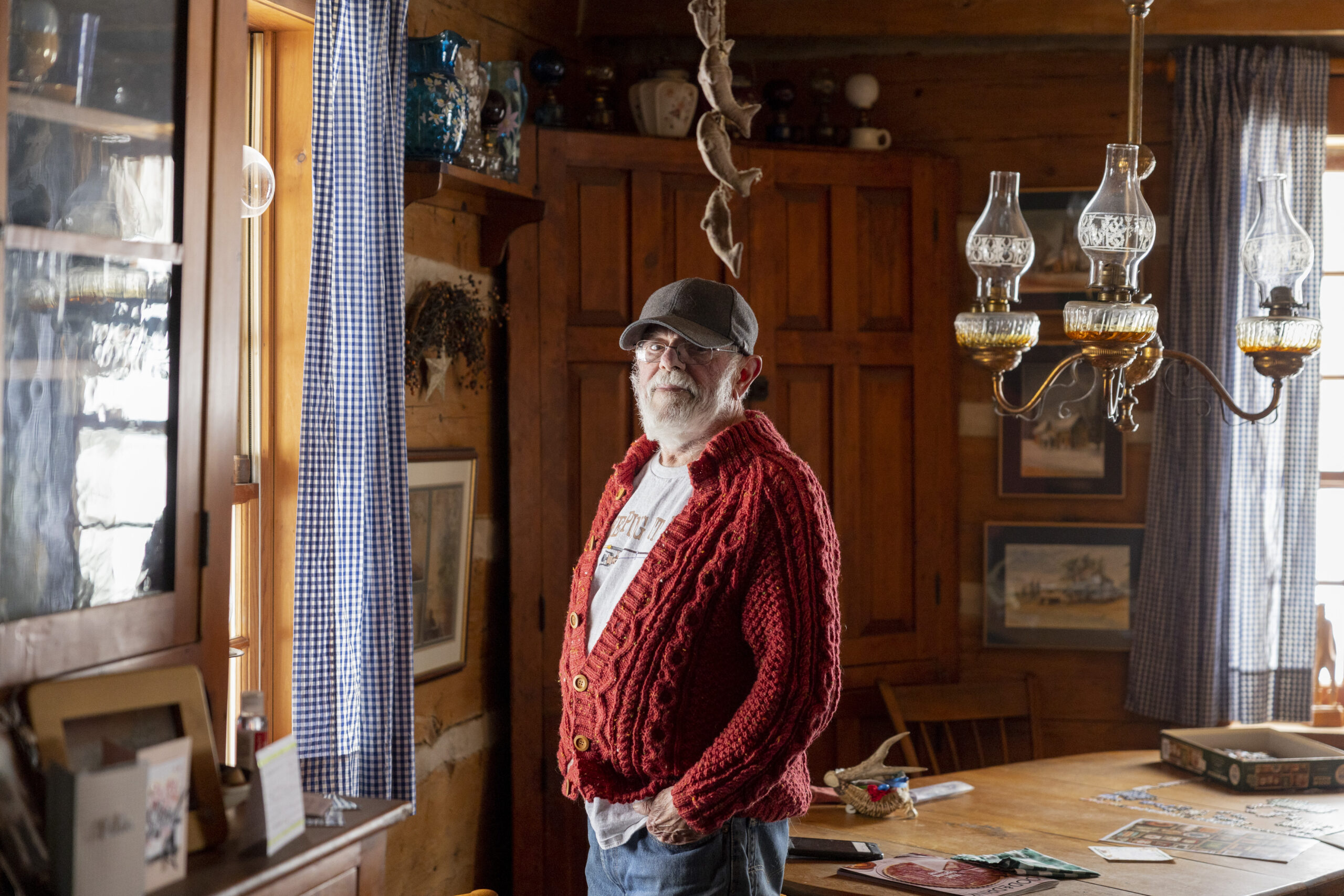
A retired glazier and a fisherman at heart, Kennedy is the first one to know when the birds arrive, where their nests are, when the eggs have hatched. When he finds a bird or a nest, he’ll draw out “hieroglyphics” in the sand with a twig: a series of arrows and approximate distance in feet to guide others. Then he’ll go home and send an email to give other plover lovers their first update of the day.
This has been Kennedy’s routine every day between April and August since 2007: 15 years of his retirement spent taking care of a teeny, tiny bird. He’s never missed a day of his patrol, not even for his daughter’s wedding — that morning, he went to the beach before heading to the ceremony a few streets away, then rushed back to the nest as soon as it was over to check on the birds, carrying a bottle of wine.
“There’s no feeling like being alone on this big beach with these birds,” Kennedy said. “The minute I saw them, I got sucked right in.”
Sauble Beach is a tight-knit community of almost 2,000 people on the eastern shores of Lake Huron, known for its long, sandy beaches. Every summer, thousands of people from across Ontario and beyond flock to its shores: cottage goers, bird watchers, vacationers hopping between small towns. Every summer, they set up camp, feeding a local tourism industry that sustains the town for the year. Unbeknownst to most of them, every summer, there’s another visitor scurrying around the sand: the piping plover.
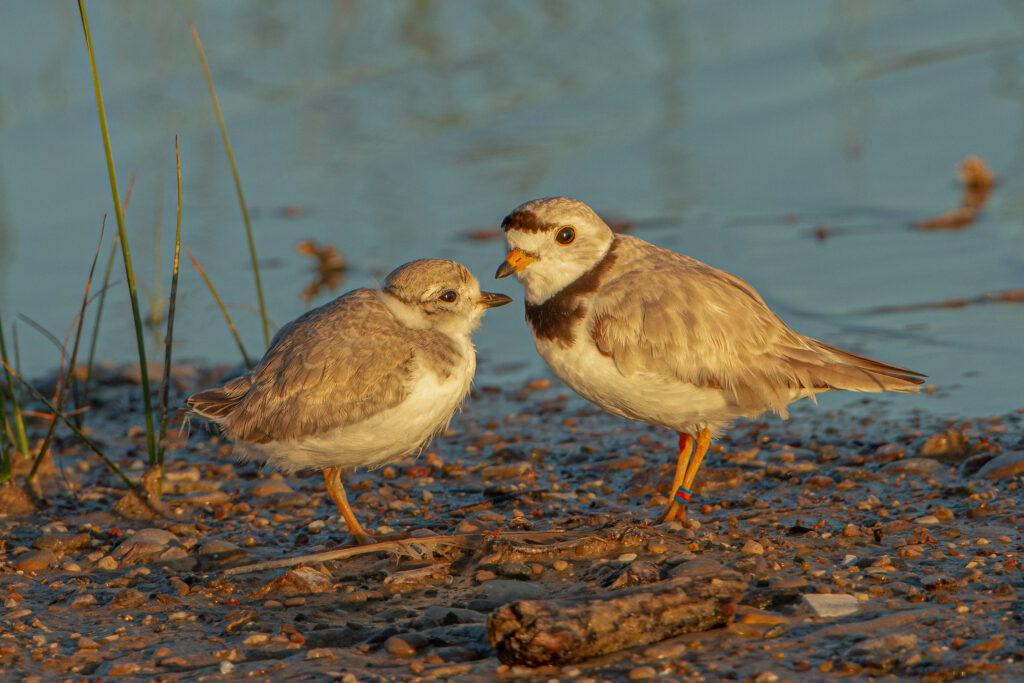
It’s been estimated that the Great Lakes region once had up to 800 breeding plover pairs across its beaches. Smaller plover communities existed precariously in Manitoba and Nova Scotia, too. They migrated to Canada from the southern beaches of Florida each April to nest, feed on worms and mollusks and raise their families along the coastlines of the Great Lakes until August.
But by the 1960s, piping plover populations were quickly vanishing from the Great Lakes region.
As Ontario’s human population rocketed, development increased and beaches became smaller and smaller. The tiny, animated birds all but disappeared. In 1977, piping plovers were declared endangered across Canada’s beaches. That was the last year Ontario hosted a breeding pair for decades.
By 1986, the birds were considered extinct across Ontario and endangered down the East Coast of North America. There were only about 12 pairs left, in Michigan. That’s when the U.S. Fish and Wildlife Service started creating beach conservation plans to save them and hopefully help them thrive again. Ontario began similar efforts, focusing on bolstering the shoreline for species and habitat protection and reducing water pollution.
Miraculously, a pair of piping plovers came back to Sauble Beach in 2007. They were discovered by a mother and her 13-year-old son, a passionate birder. Word spread, and as the world rushed to buy the first iPhone, the last Harry Potter book and sang along to Rihanna’s hit single “Umbrella,” dozens of Sauble Beach community members dropped everything and rushed to the beach to watch over two very small birds and their four miniscule eggs.
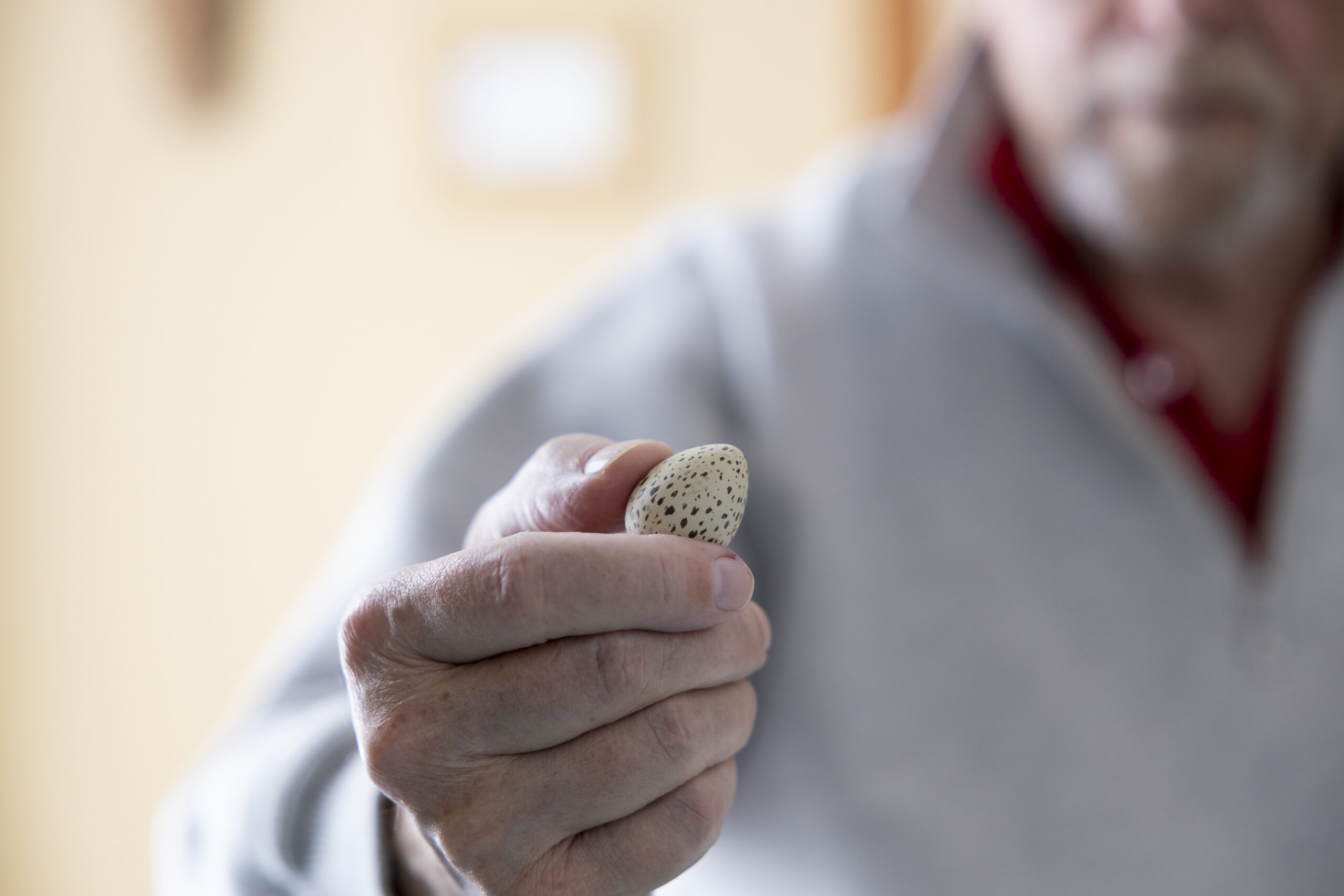
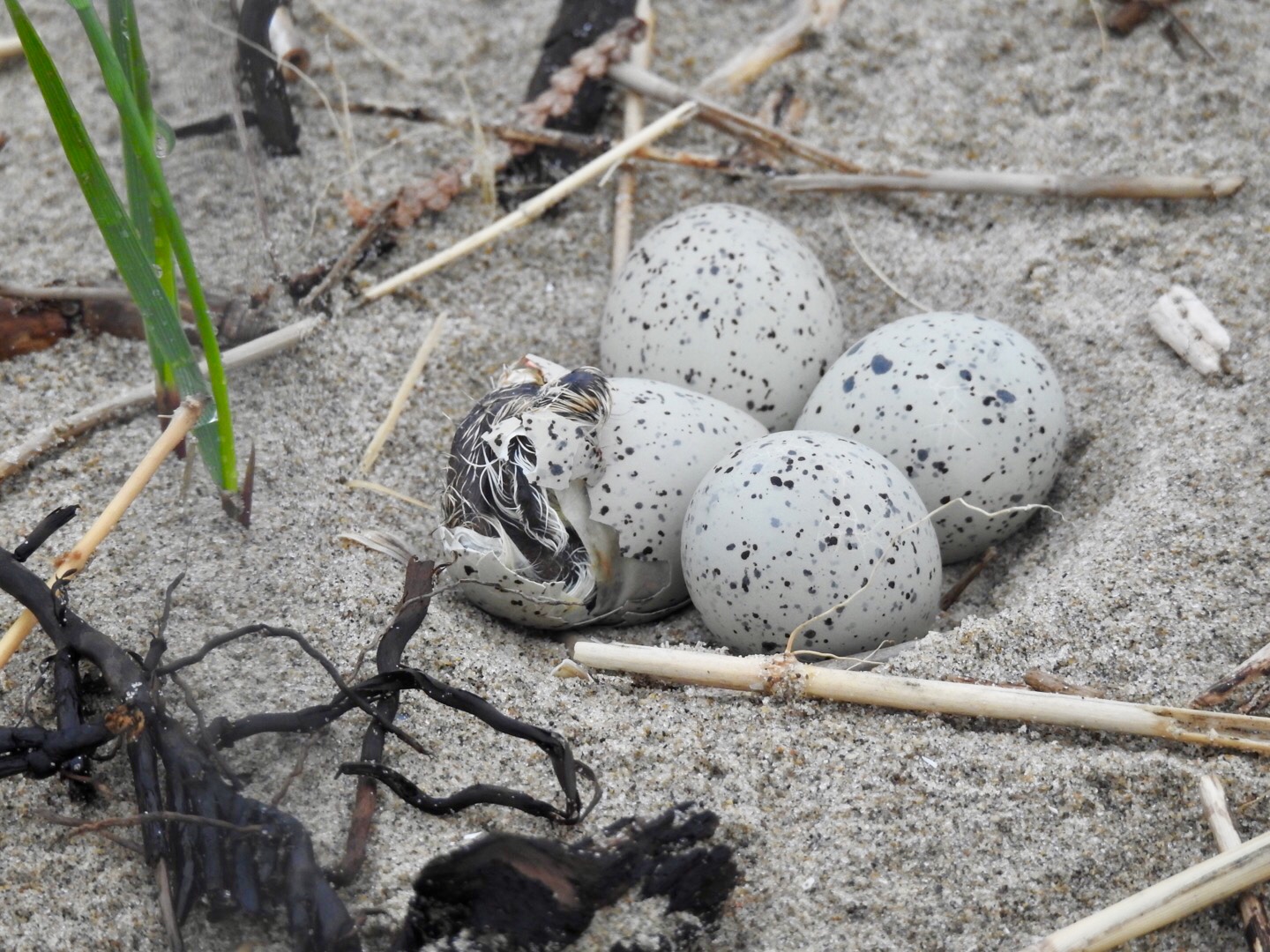
Everything was fine for a while. The plovers became regulars every summer again and flew away with their babies every fall. But over the past six years, the Town of South Bruce Peninsula has been raking and bulldozing the beach to make it look “clean” to tourists and developers. In turn, the provincial Ministry of Natural Resources and Forestry fined the town for violating the Endangered Species Act by destroying sensitive dune systems and plover habitat. (The current provincial government has renamed the department the Ministry of Northern Development, Mines, Natural Resources and Forestry. It also made enforcement of the Act the jurisdiction of the Ministry of Environment, Conservation and Parks.)
The town is now arguing the issue in court, taking particular issue with the allegation that its maintenance efforts harmed a natural environment that is home to a species at risk. The saga has become a lengthy and expensive legal battle that could have implications around the world about what it means to “damage” a habitat.
For the growing town, the debate is also about exactly what a beach should be. Pristine white sand is the preferred backdrop for sunbathing, picnics, sandcastles and snorkeling, while driftwood, uneven sand, plants, rocks and shells are best for nesting, feeding and survival. It all comes down to who the beach is meant for: humans, plovers — or maybe both?
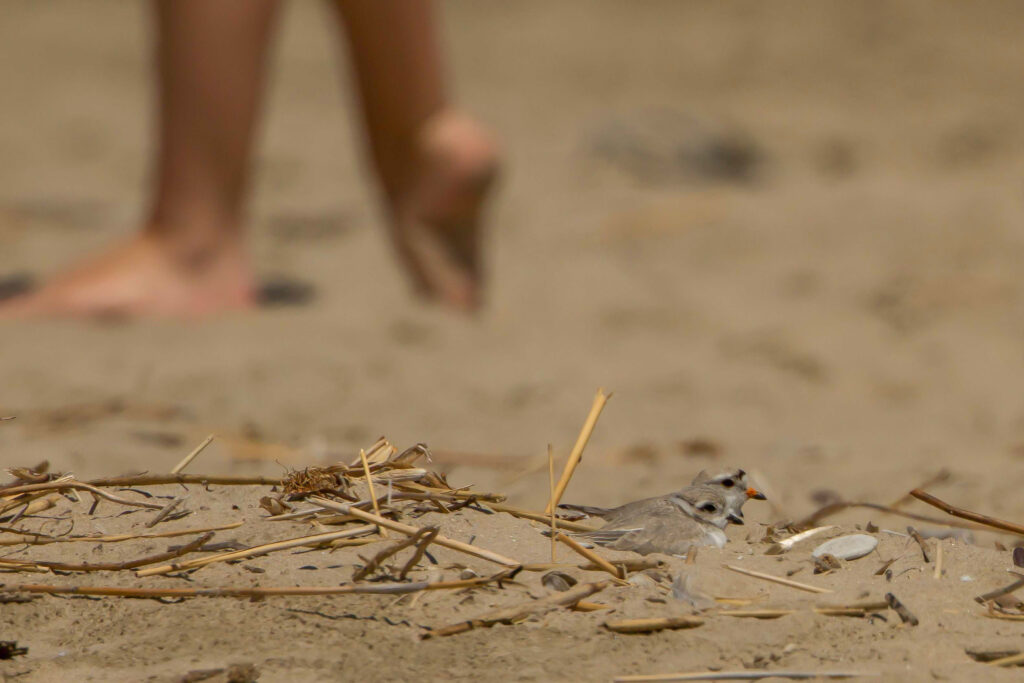
“So, are you really ready to hear this story?” Kennedy asked me through his laptop. Also on the Zoom call was Stewart Nutt, a retired teacher with a passion for nature and birds who lives in Southampton, Ont., some 15 minutes away, chuckling in a deep red hoodie with a plover printed above his heart.
Both men have lived on the Bruce Peninsula since the 1970s. Neither had ever seen a plover before 2007. Kennedy’s brother-in-law was the one who told him there was a pair of birds on the beach causing a commotion. He went to check it out and found the biggest crowd of people gathered there he’d seen in years. Everyone had binoculars or cameras with long lenses. “It was like a party,” Kennedy said.
“When I first saw them, they were courting,” said Nutt, who was one of the first to hear about the love birds. “The male was working very hard to convince a female and get her interested in him.”
“What’s new?” Kennedy said, laughing.
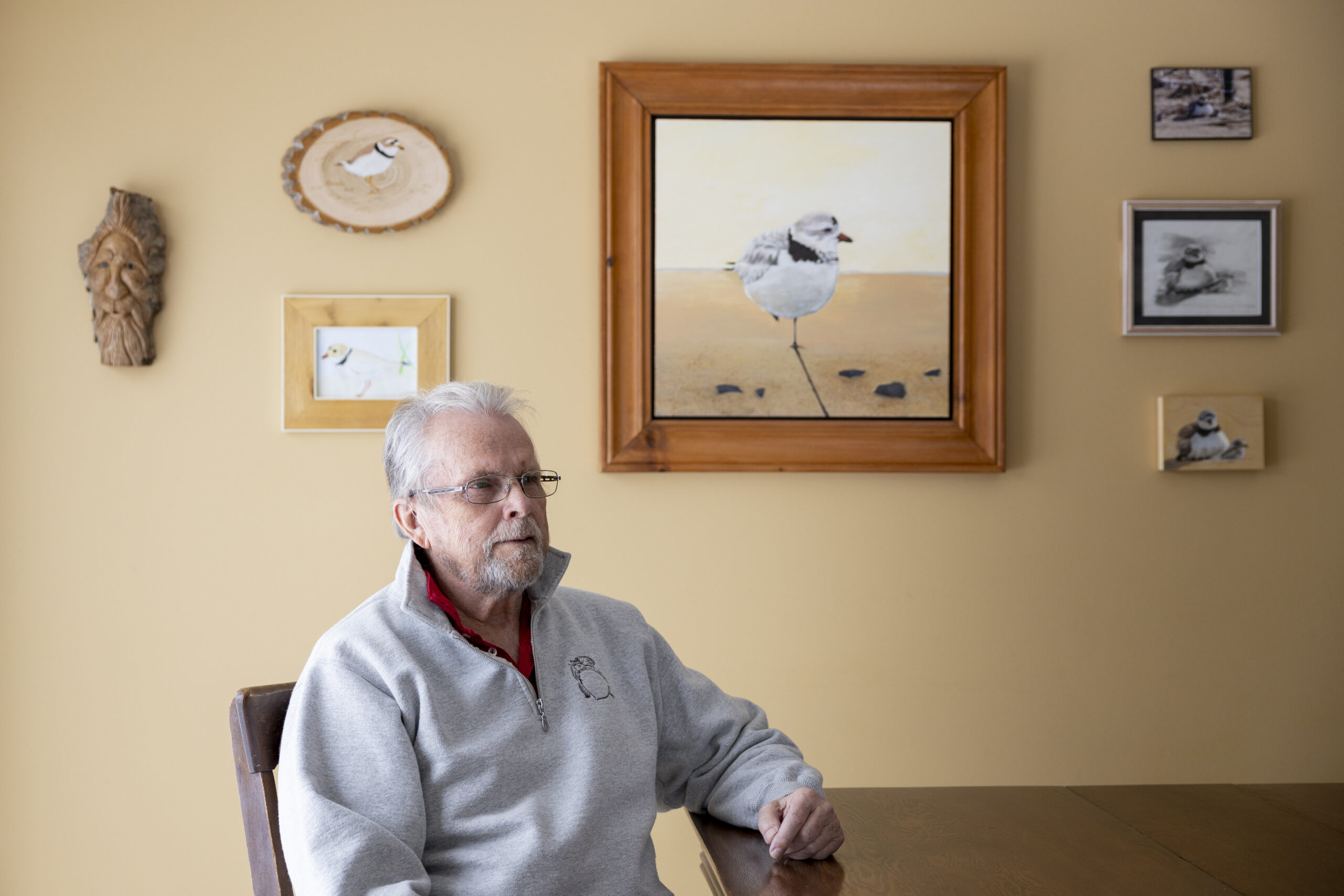
Plover lovers, as they call themselves, all say the same thing: it’s impossible not to fall in love with plovers. They’re beautiful, charismatic little birds with lots of personality. Everything they do is just cute.
Ontario is lucky if a beach is visited by five or 10 pairs of plovers a year. The male piping plover always arrives first, between April and May. He’ll dig around on the open beach and set up a nest, called a scape, in hopes of attracting a mate. The nest has to be perfect, with sand and gravel scraped away to make a hole exactly four inches wide and half an inch deep that’s then surrounded with a foundation of pebbles or bits of shell.
The scape is one of the two things a female plover will assess closely before making her choice. The other is the male’s mating dance. The steps are as follows: stand tall, walk confidently and kick your feet forward quickly and rhythmically. Nutt says you can see a male bird’s eyes change when a female responds. A successful courtship will lead to four eggs that the plovers will incubate for 28 days. Within an hour of hatching, a heap of cotton balls with orange legs will jump out of the nest like popcorn. Two weeks later, the mother plover will begin her migration and leave the father to raise and take care of the babies. He’ll help guide them all south. The next year, the kids will (hopefully) be back to make their own families.
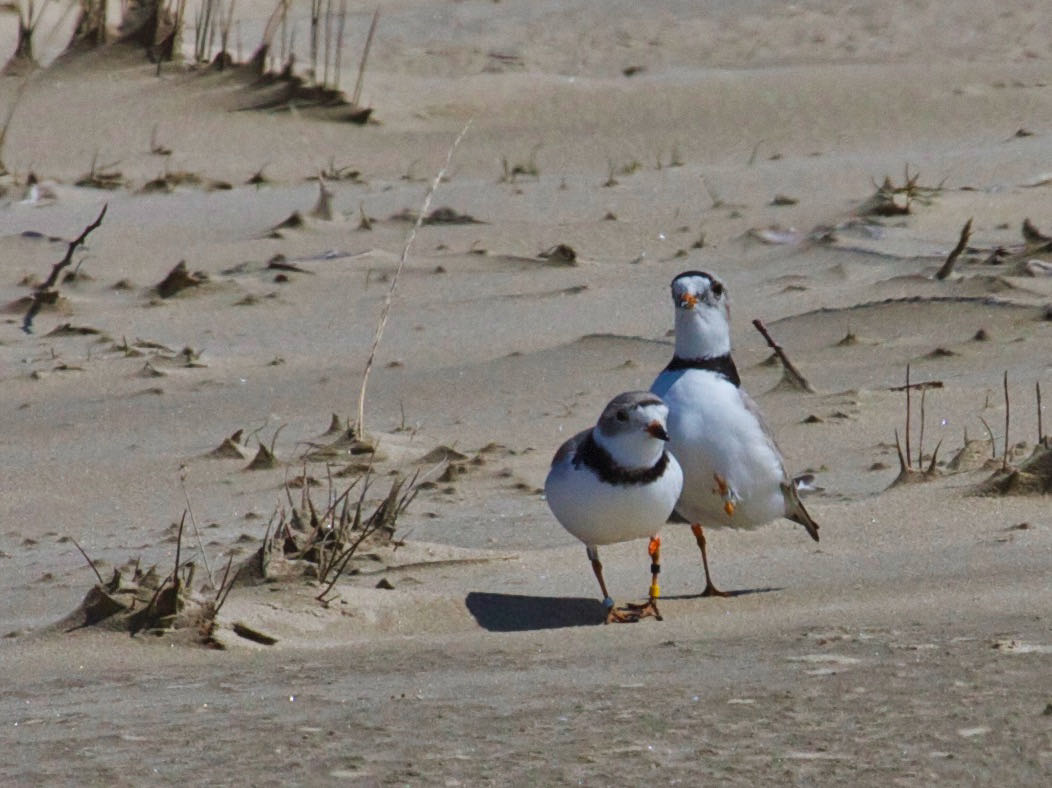
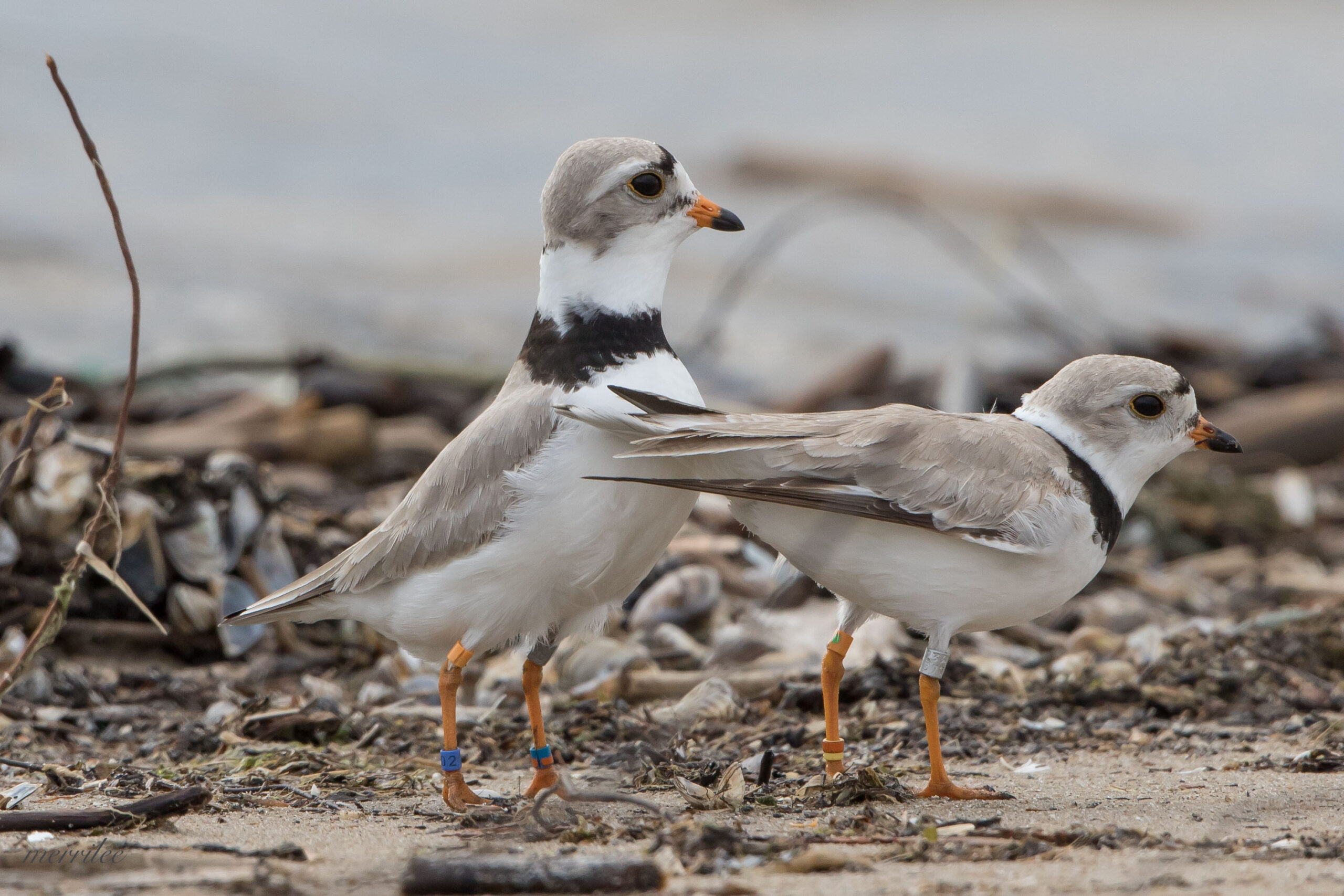
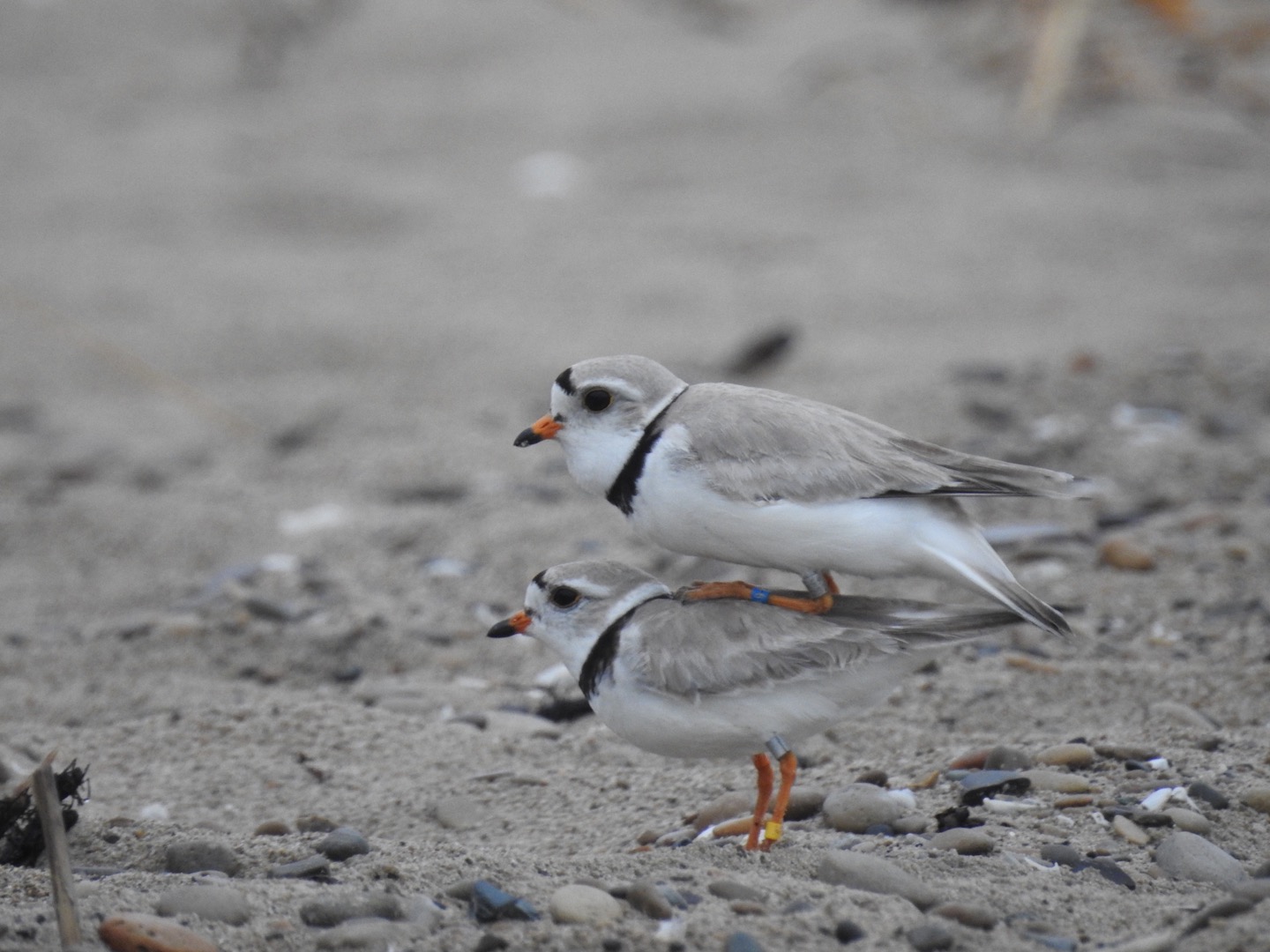
For the first five years after the birds’ 2007 return, Nutt organized an effort every summer to take care of the birds. Kennedy was one of the first of 125 volunteers. Not knowing exactly what kind of challenges the birds might face, Nutt went door-to-door to simply rally a group to watch over them. He made presentations at local churches and scrounged funding from local real estate companies. Nutt called this early group “plover guardians.” They would shoo away gulls and foxes that got close, and set up enclosures to protect the birds.
The guardians were on the beach from 6 a.m. to 9 p.m. every day of the week from April to September. On the weekends, when the beach was most packed, they were there 24 hours a day.
“I’d get there for my six o’clock morning shift and [Nutt] would still be there, sleeping in his car,” Kennedy said.
“I’d be getting up every hour, going out to the beach to check just in case there were problems on the beach with all the partying going on,” Nutt said.
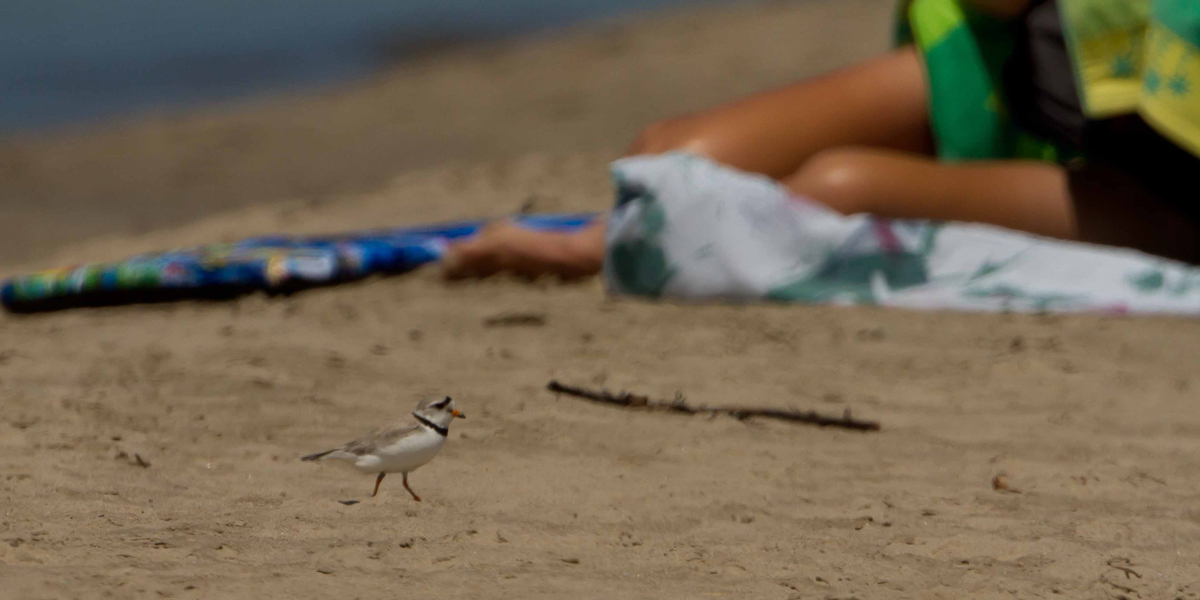
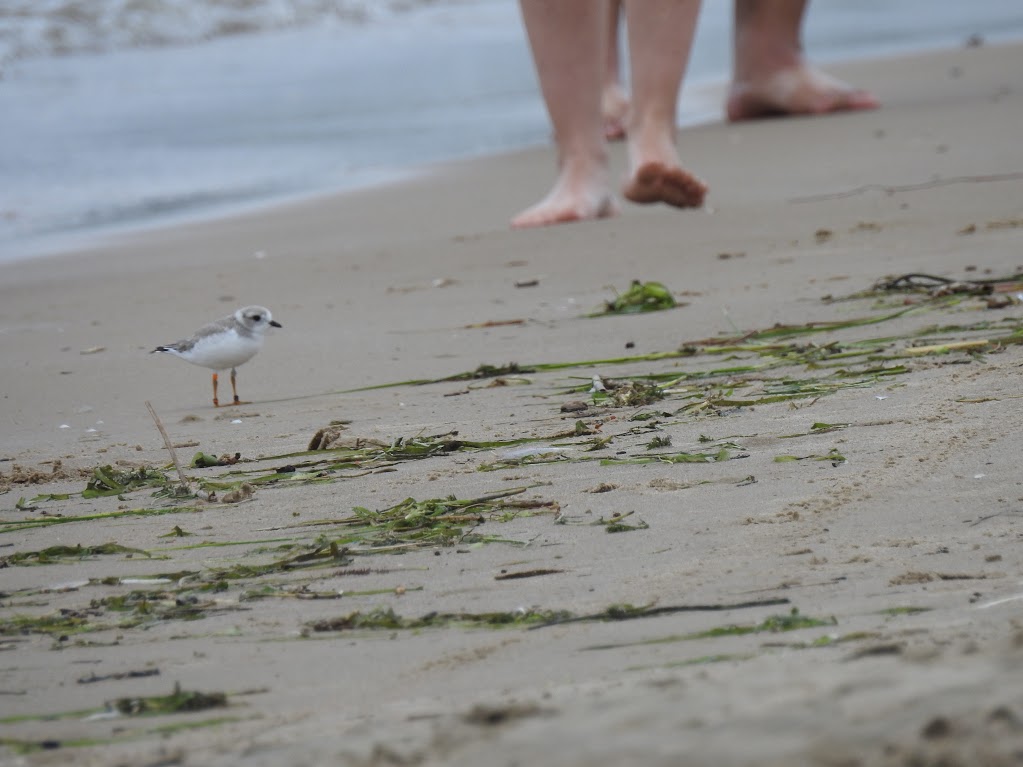
“But nothing really bothered the plover,” Kennedy said. “Fireworks, fire pits, drunks all over … A plover doesn’t give a toot. I’ve seen little kids on the beach with their pails making sandcastles and plover chicks running this way and that way.”
“A plover has got to be one of the weirdest birds in the world for not fearing people,” he added. “And humans, well they don’t pay attention enough. I’ve walked down the beach and the plovers are two feet away from people feeding or whatever and they don’t even know.”
Even so, you have to be very still to get close to plovers, said Nutt, who once stood near a nest and stayed “really, really quiet.” The plover chicks, called fledglings, came running out, lightly stepping back and forth on his feet.
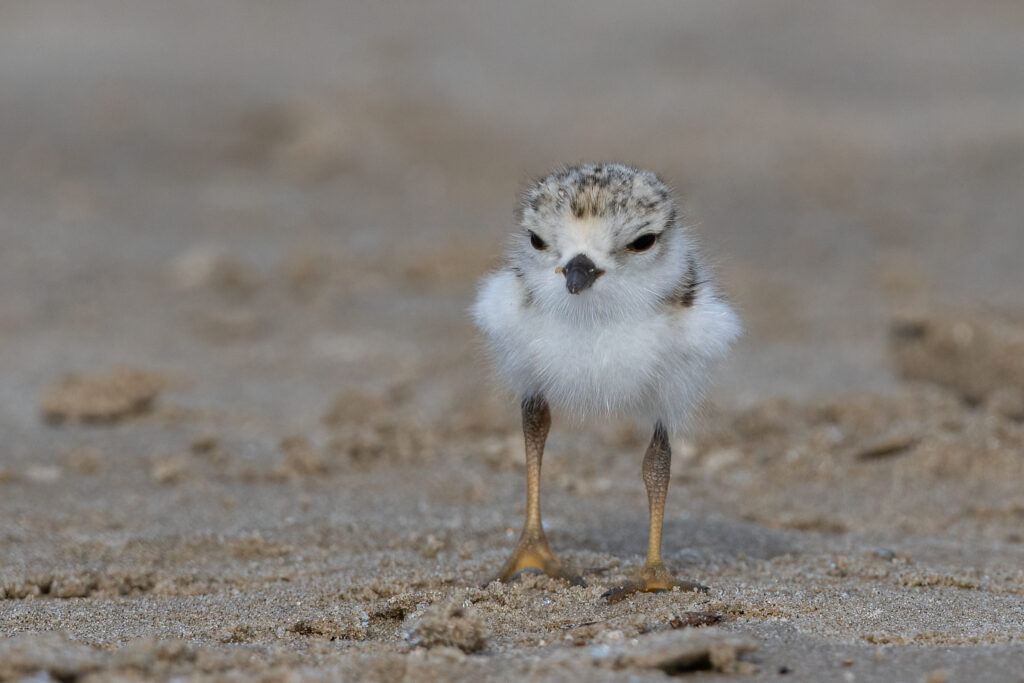
Over the years, volunteers filled dozens of notebooks with observations and stories about plovers. Some drew pictures. Some wrote poetry and prayers. They became a community within a community. They’d come down to the beach every night, coffee in hand, to watch the summer sunset after tucking their kids in, making sure the chicks would also be okay in the dark.
Eventually, the plover guardians volunteer group adopted a new (“better, and so obvious” Nutt said) name: Plover Lovers. With the help of Ontario’s Ministry of Natural Resources and the national conservation organization Birds Canada, the group continues to record and study the birds closely. They track their movements, their food intake, their interactions with each other and humans, and their growth. When a plover pair decides to breed, the Lovers close off the area to the public, putting up signs in both English and French.
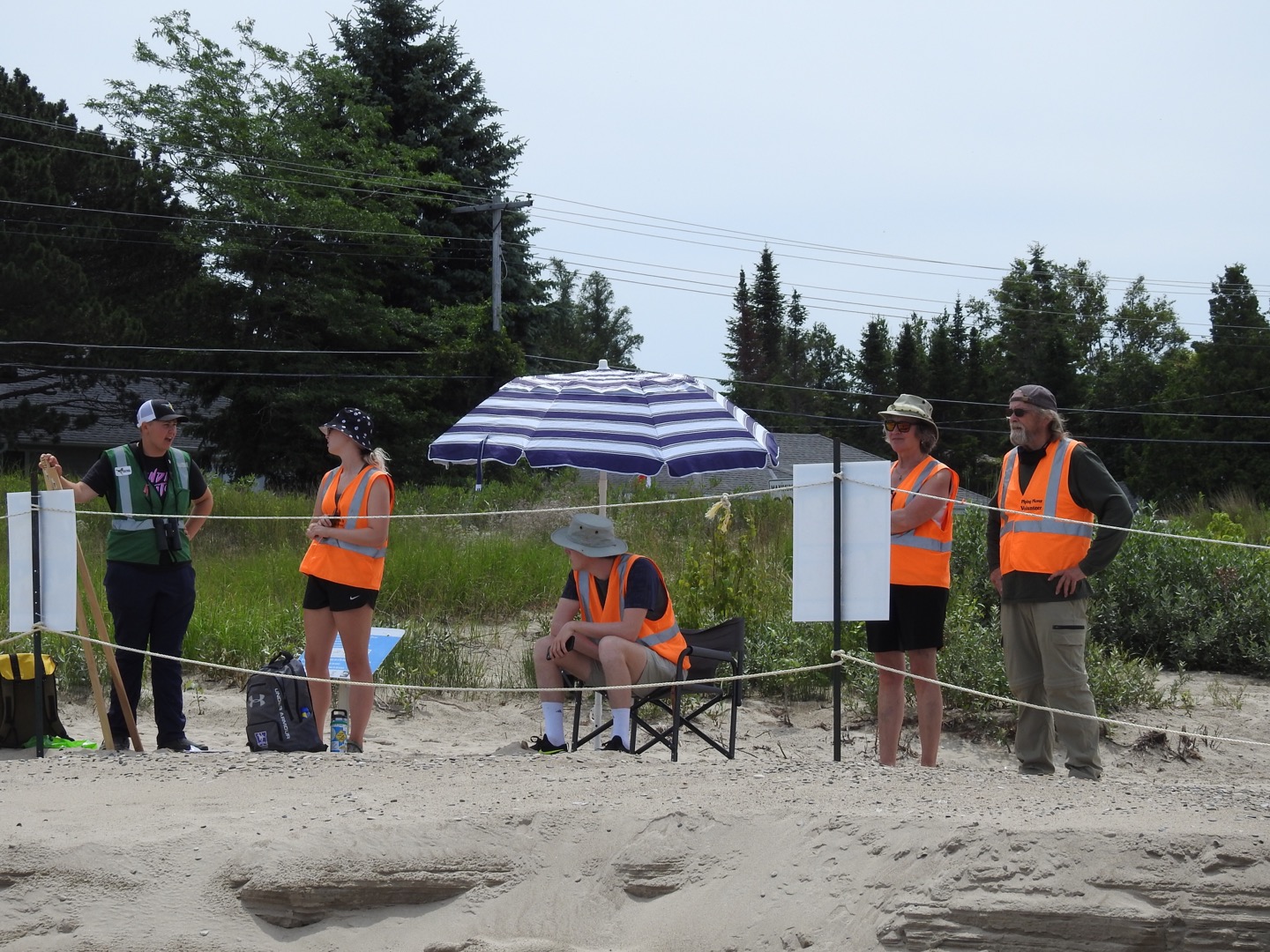
The fences are designed to allow the birds to enter and exit freely while protecting them from predators like gulls, crows and foxes. Often, the volunteers give the plovers names: Bo, Nancy, Worsley, Pepa, Fudge, Ms. Green Dot, Mr. Lonely, Flag Boy, Port Boy, Ms. Sunshine.
“We developed a relationship with each other as volunteers but also with the birds themselves,” Nutt said. “We were all from Sauble Beach but some of them had never met before. Like me and Don, although I’m still not sure we’d call each other friends, do we?”
“Not yet,” Don said, teasing.
“We’re certainly working on that,” Nutt added, grinning.
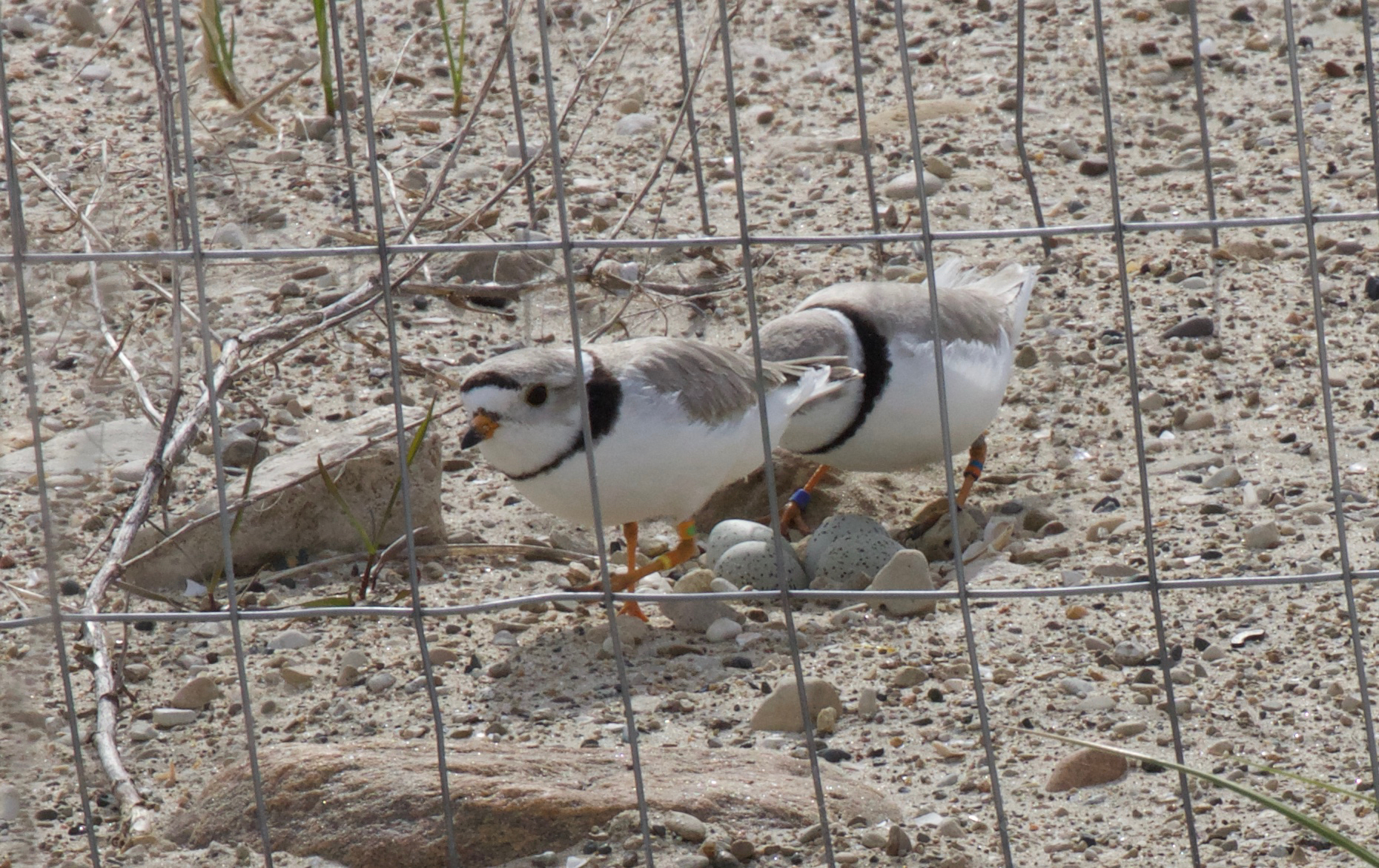
A year after the plovers returned to Sauble Beach, the Town of South Bruce Peninsula began working with the provincial Ministry of Natural Resources to protect them. Garbage cans around habitats were removed, beach raking was stopped and volunteer programs were funded to help increase public awareness of the species. This system worked collaboratively for 10 years, as multiple levels of government and the local community found a way to protect the plover and keep the beach clean.
Then, as these stories often go, a new council was elected by the town of around 9,000 residents in 2014. The current mayor, Janice Jackson, won 52 per cent of the vote, and her platform included cleaning up the beach.
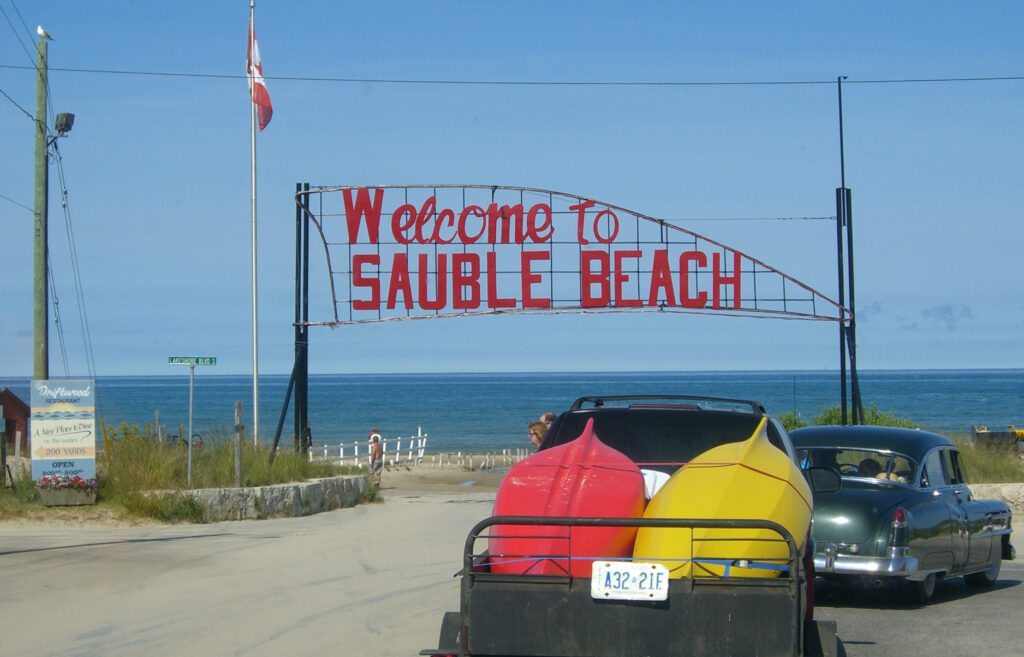
Judging by online comments from the time, it’s a promise that some had been waiting for. In June 2014, for example, Rick G. wrote on TripAdvisor that the “beach is a mess” and that there are “large sections of beach including several park benches fenced off because of plovers. Beach has not been raked and wood, logs, winter debris all over. No garbage containers. Appears to be no beach maintenance at all this year.”
With Jackson at its head, the town council argued the beach hadn’t been maintained properly since 2008 and was becoming increasingly uninhabitable for both humans and plovers. At the start of her mayoral tenure, Jackson said the north end of the beach was overrun by willow bushes and the town wasn’t allowed to remove them. “It got to the point where there was little to no beach left at all,” she told The Narwhal. “It was a huge loss to our community as well as our tourists. There was a lot of pressure on the council to do something to bring the beach back.”
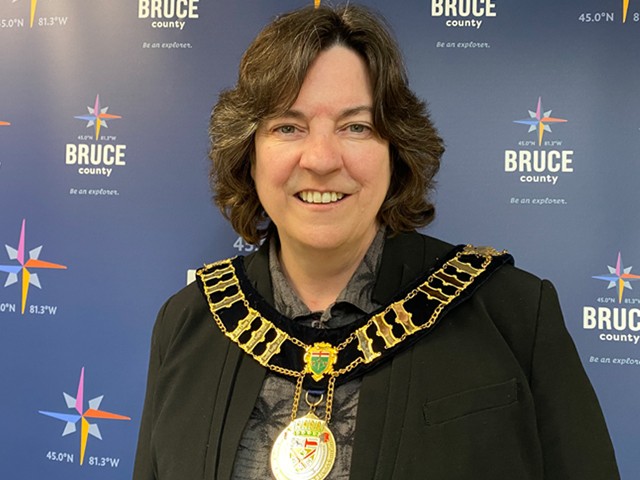
They tried to do this by hand, using simple tools to cut and clear the bushes, but that seemed to harm the beach more. Jackson said she wrote to the ministry informing them as such but received no response. The ministry has never been dissatisfied with their beach management efforts in the past, she said, adding that they had “congratulated the town and acknowledged we had been wonderful stewards of the plovers.”
Any maintenance work was done after the plovers had left for the year, Jackson said. As Rick G. might have hoped, the council passed a new by-law to restart beach raking, arguing it would make the beach more pristine and enjoyable for tourists, local beachgoers and plovers. The raking is as it sounds: scraping away the natural sand dunes and grass landscape, along with any debris and litter, to make a flat ground.
Kennedy saw a raking in progress one morning in 2014. As he walked onto the beach at sunrise he saw “an absolute army of local government crews raking the beach, raking it immaculate, pristine.”
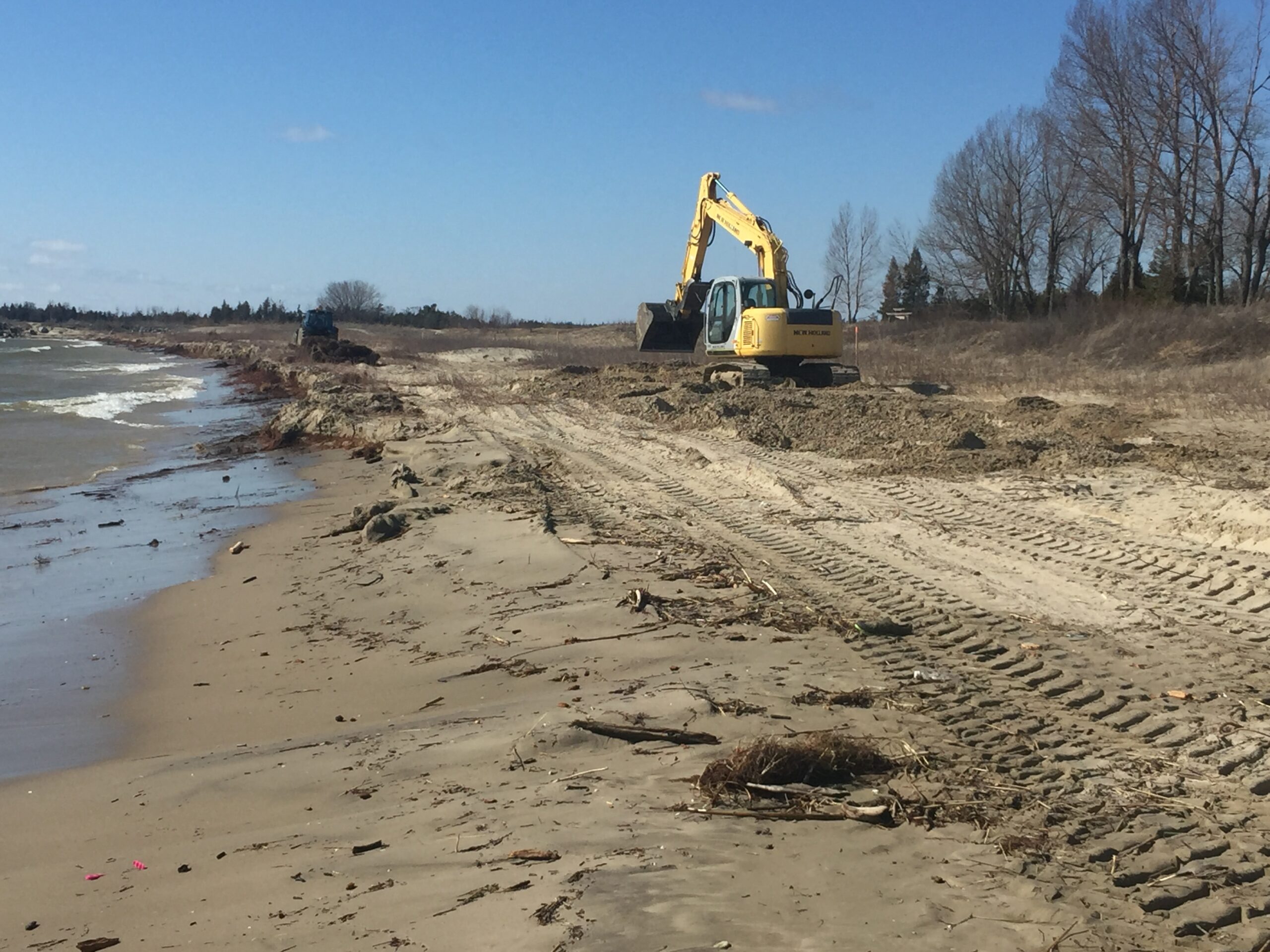
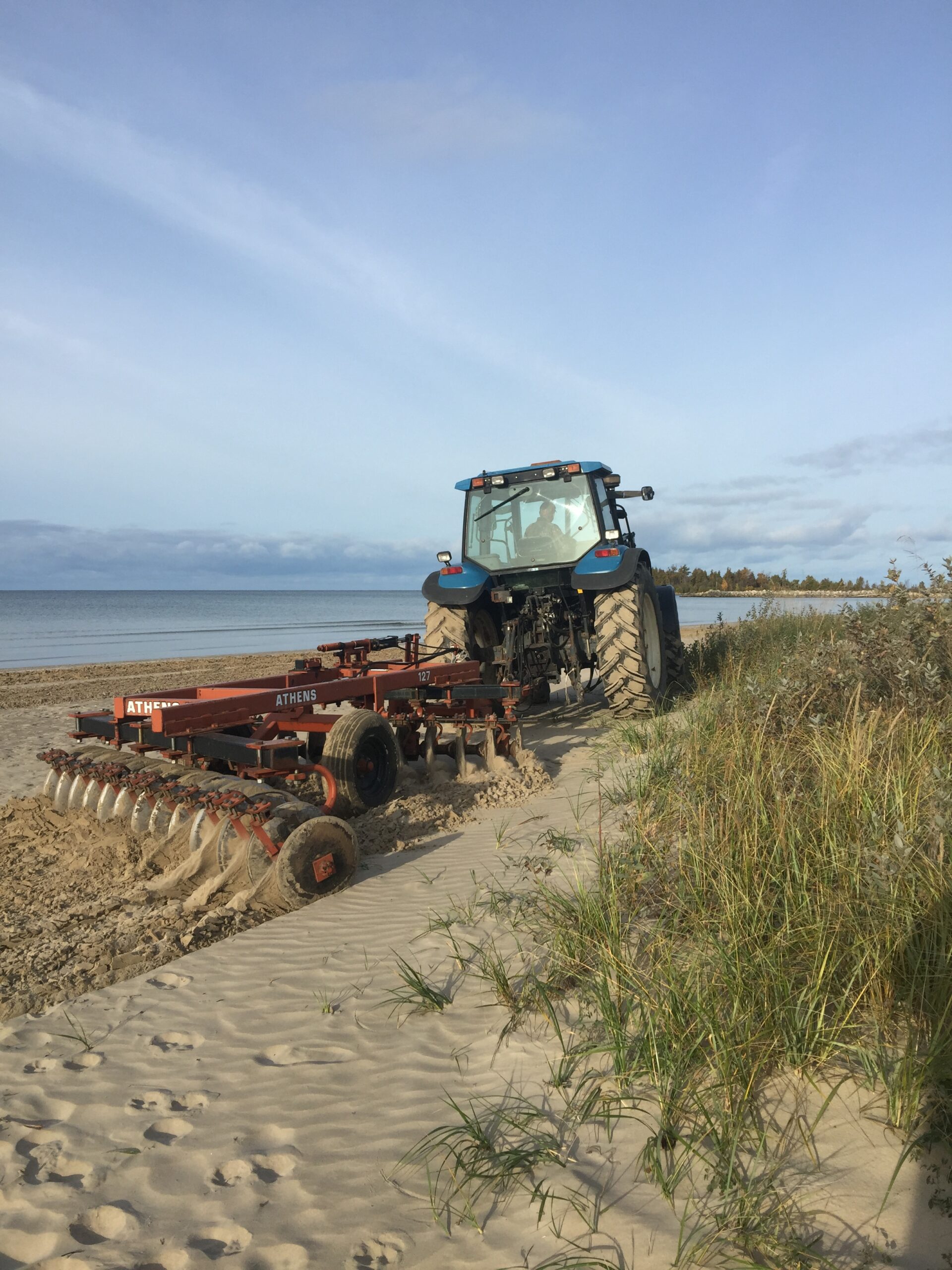
“There was no friggin’ stick for a plover to hide behind or walk over. Nothing,” Kennedy said. “Only tourists could be ecstatic about that beach.” What was left were enormous piles of brush and garbage pushed to one side of the beach.
As a result, in 2015, Sauble Beach lost its status as a Blue Flag Beach, a stamp of approval given to environmentally sustainable beaches that maintain excellent ecological conditions for all species. Canada is one of 49 countries that has consistently achieved this status, with 23 beaches across the country receiving the seal in 2021.
Eighteen of them are in Ontario and several are plover nesting sites. That includes the world’s longest freshwater beach, Wasaga Beach, just two hours east of Sauble. Wasaga has been dubbed “Plover Land,” and the local government holds an annual public awareness festival called “Plover Palooza.” The beach town implements a series of conservation measures in its maintenance efforts so as to not harm plover habitat. Since 2007, Wasaga hasn’t had a year without fledglings.
But at Sauble Beach, despite the loss of Blue Flag status, the pursuit of pristine sand continued. In 2017, the town bulldozed the shoreline. Everything from the main driveway to the rockpile where plovers go to hide was cleared of trees, bushes and all other greenery. The work was authorized by a vote of council — three to two — without consultation with the Ministry of Natural Resources.
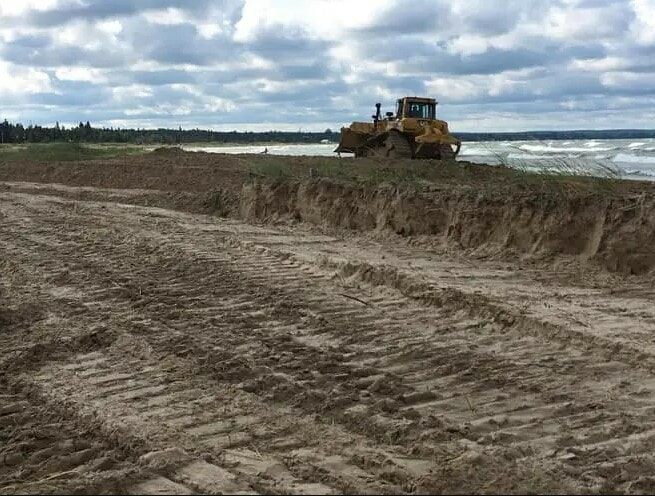
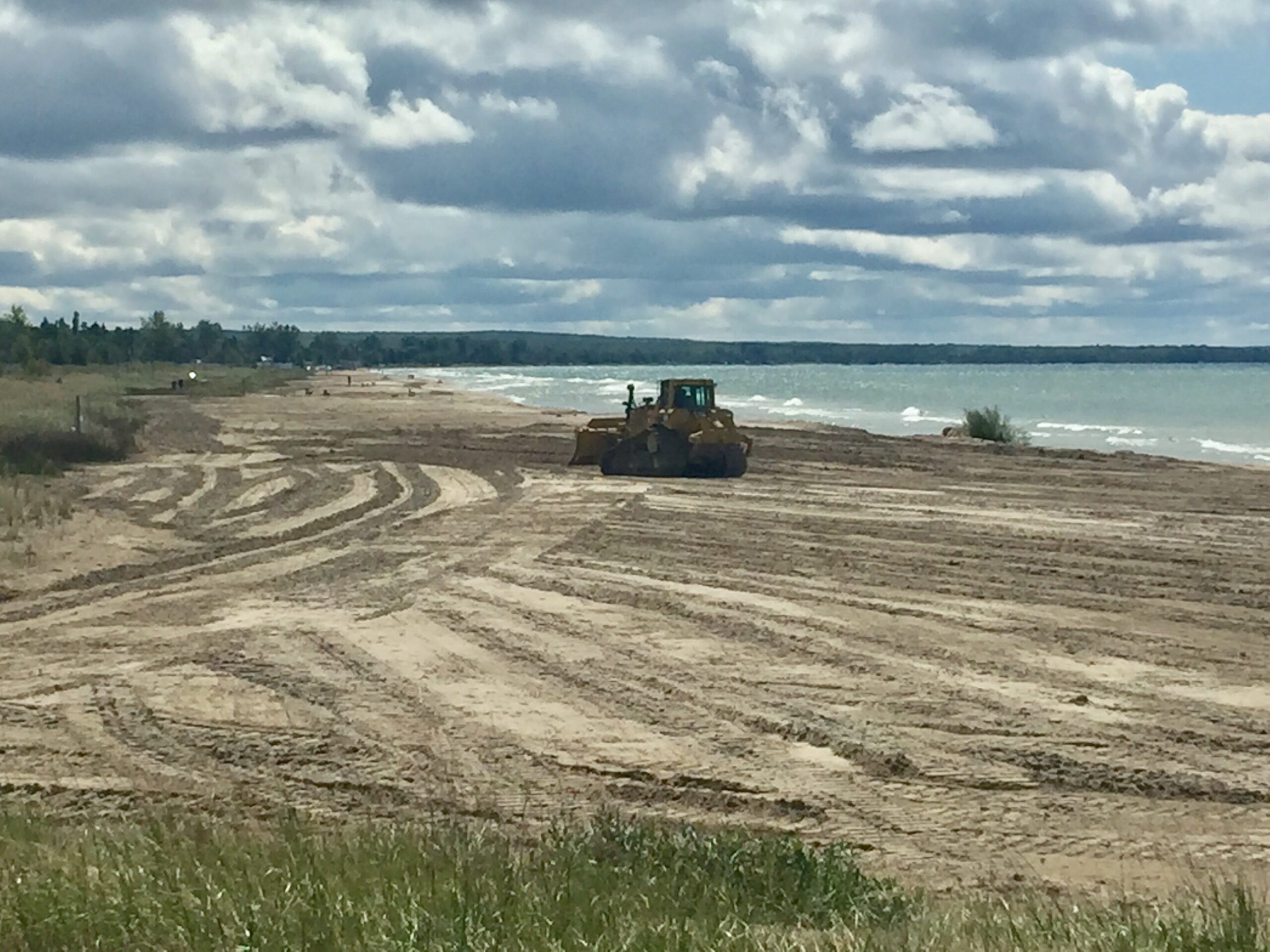
“It was just heartbreaking to see that,” said Merri-Lee Metzger, who travels two hours from Kitchener-Waterloo, Ont., to her cabin at Sauble Beach every summer. “Everything living was gone right to the dunes. It was an empty canvas for the wind to go through and blow the sand right off the beach.”
According to the province’s plover fact sheet, groomed beaches remove natural hiding spots for plovers, making them more vulnerable to predators and intense weather events like rain storms, floods and heat waves. That’s why, in 2017, the provincial Natural Resource Ministry fined the Town of South Bruce $100,000 for violating the Endangered Species Act by destroying plover habitat — an amount to be paid to Birds Canada for piping plover recovery or protection efforts. In 2018, three ministerial stop-work orders were issued to halt all beach maintenance.
Mayor Jackson said it’s “really unfortunate that it’s come to blows like this” because, in her opinion, plover habitat has not been impacted. “If we had damaged or destroyed their habitat, they wouldn’t come back year after year. They’d look for greener pastures,” she said, adding that plovers prefer “a clean beach with sparse vegetation.” (Piping plovers programs show the birds prefer wide, undisturbed sand and gravel beaches with dune and beach vegetation.)
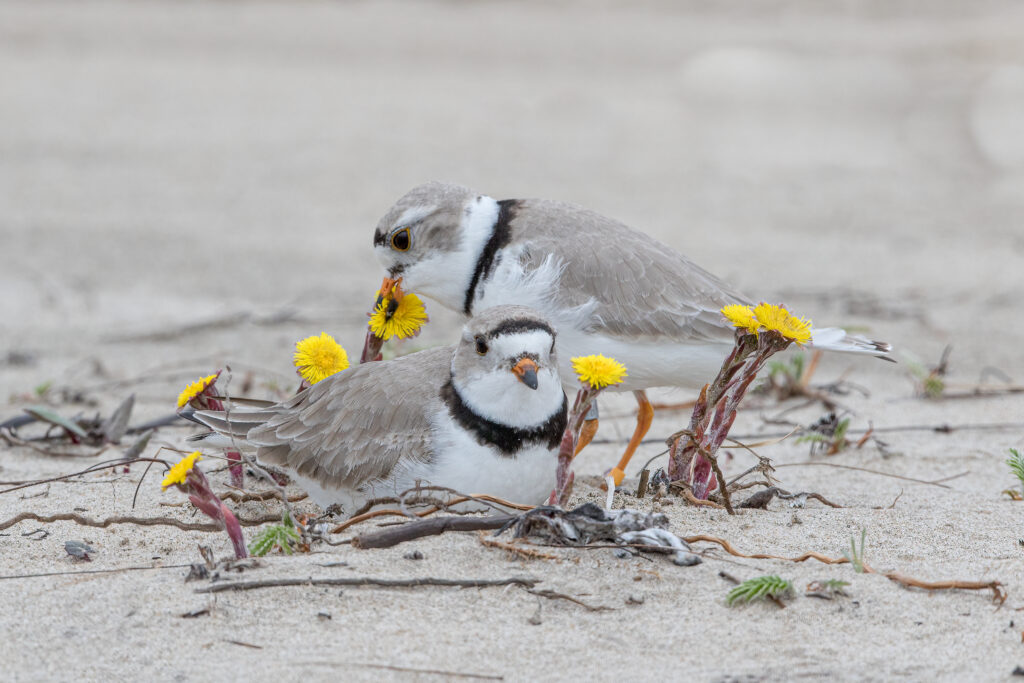
While it’s true that plovers did return to one area after vegetation was removed, Birds Canada reported the fledglings didn’t survive. And overall, fewer plovers are coming to Sauble Beach and fewer plovers are being born there. Between 2014 and 2016, the Plover Lovers recorded only three baby plovers and lost three adults. 2017 was a lucky year, with seven new plovers. Since then, there have been no chicks.
Jackson said the town has “no control” over how many plovers are born and survive at the beach. Plovers have natural predators and there’s only so much the town can do to keep them away, she said. “Everybody’s looking for solutions but this is just a fact of life,” she added. “Plovers are always going to be subject to predators.”
Humans need “a reality check of what a healthy, natural beach looks like in the Great Lakes,” said Andrea Gress, the piping plover coordinator for Birds Canada.
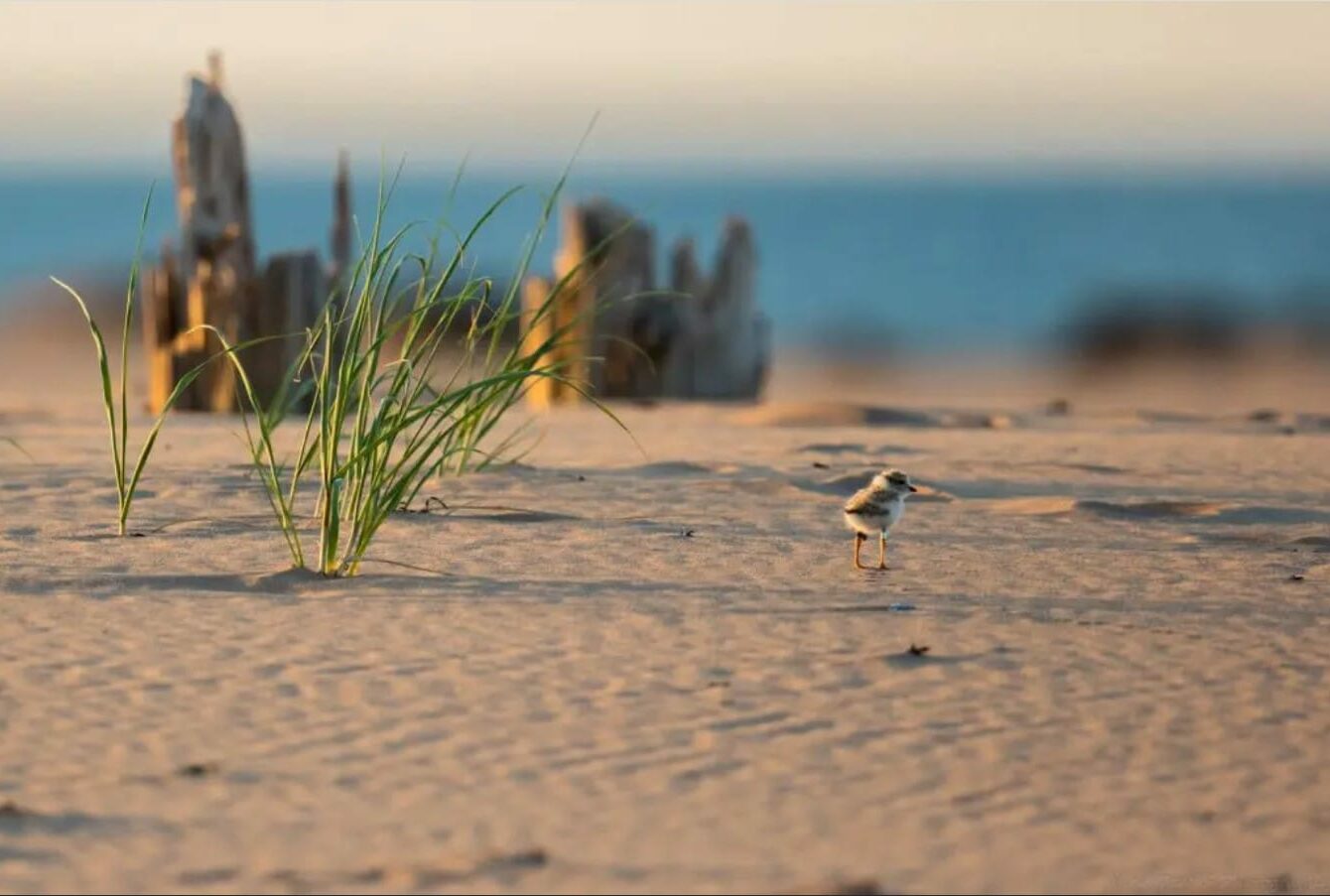
Gress explains that the stereotypical ideal of a beach is a tropical stretch of sand by the ocean, where large waves and strong tides keep the shoreline flat. Ontario’s beaches aren’t like that: the lake shores are filled with dunes, natural vegetation like grass and shrubbery, and driftwood, all of which sustain an ecological world of insects and birds. If left largely untouched by humans, these beaches aren’t subject to the erosion of the water; the only maintenance needed is the removal of invasive plants and litter.
Both development around the Great Lakes and climate change are taking a toll on the natural environment, she said, and reducing the amount of beach and shoreline available to all. “It weighs on me that we don’t manage our beaches like a sustainable ecosystem until we’re forced to and I think that’s really short-sighted,” Gress said. “I think that attitude needs to change, not just for these birds but for all our beach species, including humans.”
Beaches are “dynamic but fragile,” said Peter Middleton, another Sauble Beach Plover Lover and a retired outdoor education teacher. “It’s a natural windswept storm, a tossed and changing environment, a place for the water to deposit natural treasures, where little plants poke through dense layers of sand,” he said. “If you look and listen closely, it’s more than just a sandbox.”
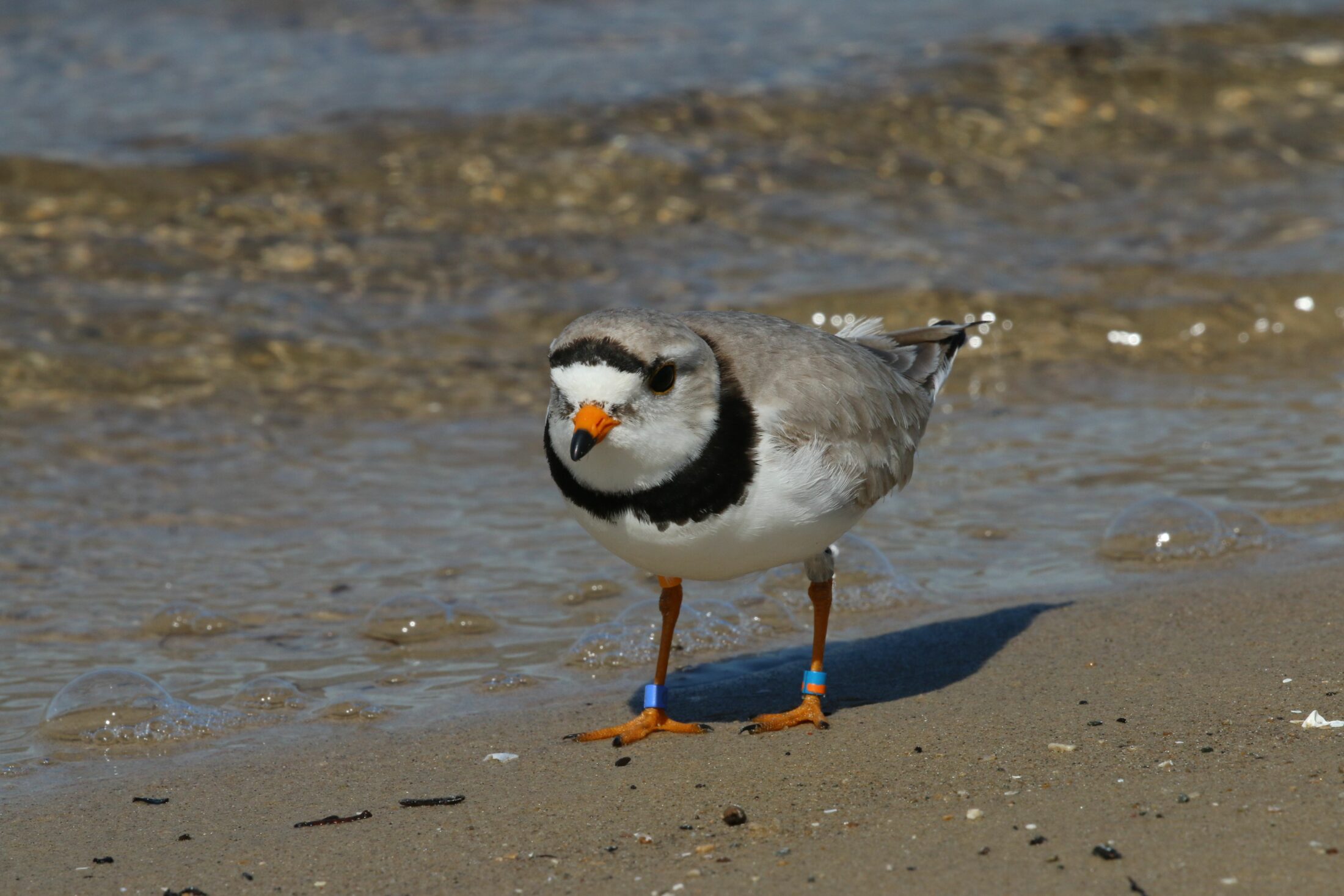
He said this understanding of what an Ontario beach should be isn’t reflected in politics. Nor are larger forces at play, from overly high water levels to droughts. When the plovers came back, no one in the local government or the community knew what needed to be done; everyone has had to relearn the multitudes of a beach habitat together.
“Managing a habitat always has its ups and downs,” he said. “The first step is to understand it.”
The South Bruce council disagrees with Middleton’s interpretation. Last year, it appealed the $100,000 fine at the Ontario Court of Justice and lost. So the municipality is appealing it again, at the Ontario Court of Appeal. The last hearing was on March 11; a date for the decision has not yet been disclosed.
The initial court decision sided with the Natural Resources Ministry, finding that the bulldozing was egregious. “It showed a wanton disregard for the habitat of the piping plover by the long-term levelling and the cutting of the foredune and dune areas,” wrote Justice of the Peace Charles Anderson in his decision. “It is doubtful that natural wind, rain and weather could reproduce the foredune and dune areas after such evasive beach maintenance conducted by the bulldozer.”
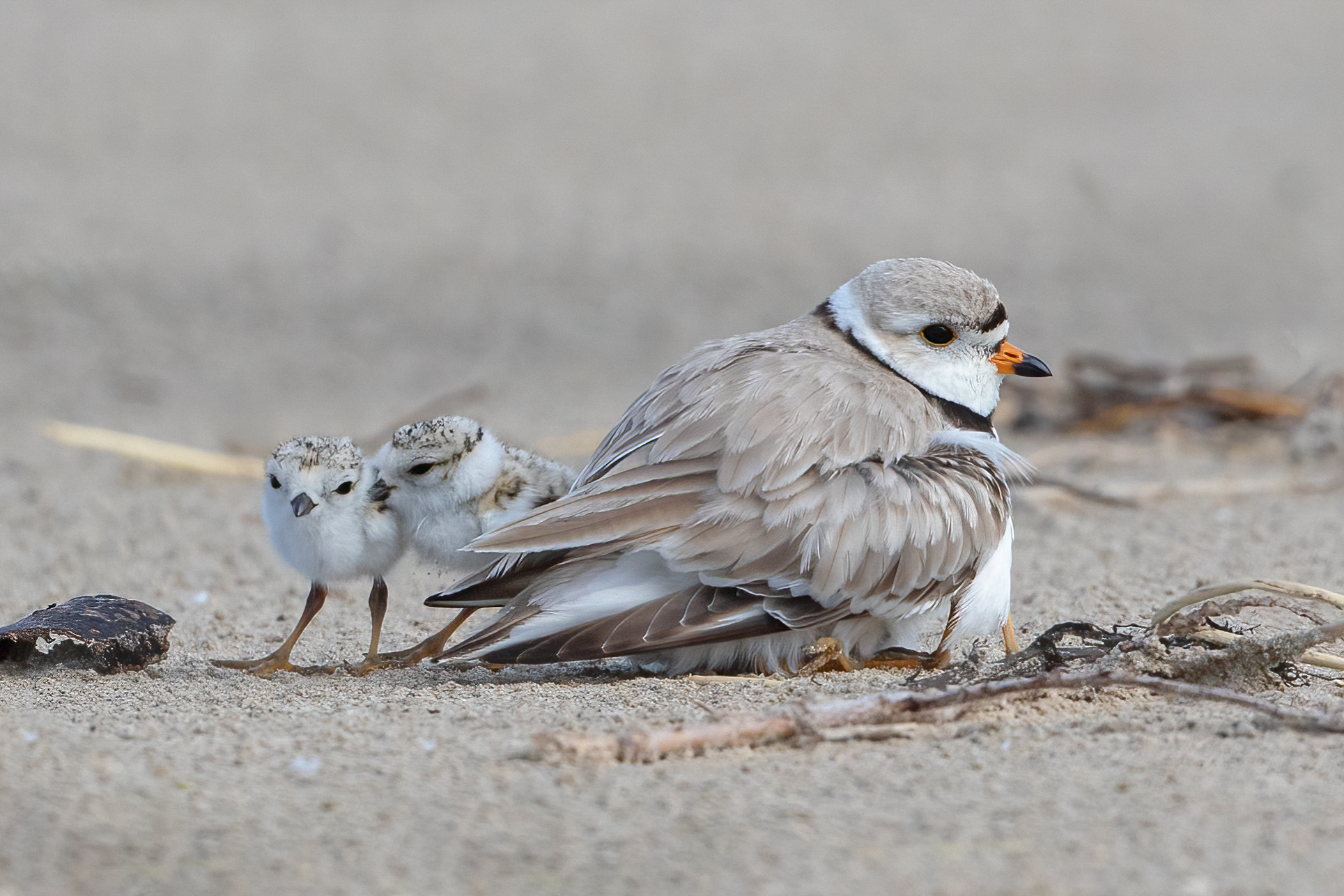
The town is hoping a new judge will have a different opinion. As it stands, Ontario’s endangered species legislation leaves the destruction of habitat open to interpretation. Section 9 and 10 of the law prohibit destruction of species and damage of habitat respectively, but no courts have yet considered the definition of “damage.”
The town has four key points in its appeal. First, that the damage to plover habitat was never proven, as shown by the number of birds that returned after the 2017 bulldozing, the most counted since the plovers’ 2007 reappearance. Second, that the beach is a unique, “heavily recreated” habitat that is shared by humans and species-at-risk, which means it needs maintenance, a reality that has not been properly considered by the legislation or its enforcement. Third, that the government witness whose testimony formed the basis of the fine was a Ministry of Natural Resources biologist who helped with plover recovery and wasn’t objective in her assessment. Fourth, that this kind of raking had been done before — in selective spots on the beach in 2015 — and approved by the ministry.
For its part, the province is still arguing through a Crown attorney that the town’s actions in 2017 were unnecessary and went well beyond permitted maintenance work. The Crown restated these points on March 11, acknowledging that raking in the middle of the beach, away from the nesting grounds, was allowed. Straightening of drainage channels and the removal of sharp objects and invasive plants was also allowed. But bulldozing the full length of the beach was not permitted, ever.
“The objective was aesthetic,” Crown lawyer Nicholas Adamson said at the latest appeal hearing.
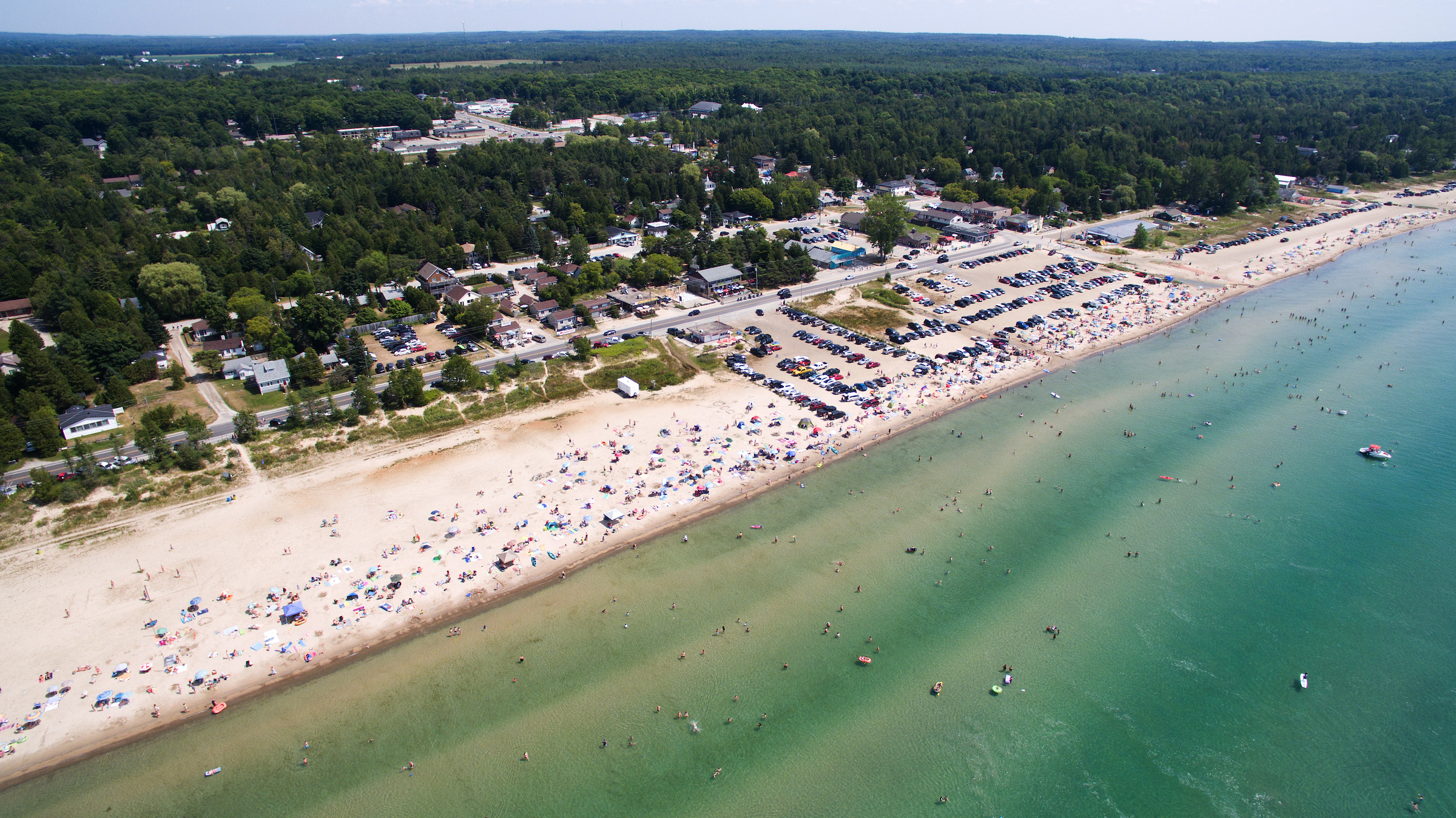
The stakes are high, said Tim Gray, who grew up near Sauble Beach, and is the executive director of Environmental Defence, one of several intervenors in the court case. He explained that if the town is successful on this second appeal, it would mean that the government would essentially be unable to protect endangered species habitat.
The province would need clear evidence of “a dead critter in the habitat” before it could take any action, Gray said. Getting that would be incredibly difficult, since the main cause of species decline is loss of habitat — piping plovers don’t necessarily die on Sauble Beach, they just don’t return if there’s nowhere safe for them to raise a family. The raking of the beach, he said, should be considered an intentional act that destroys the habitat of an endangered bird, preventing it from landing or breeding, let alone surviving.
Lindsay Beck, a lawyer with Ecojustice, which represented intervenors Environmental Defence and Ontario Nature in the case, said a finding that establishes a narrow interpretation of “damage” to a habitat would limit the ability to stave off “death by a thousand cuts — the minor alterations over time that would slowly but surely degrade the habitat of a species that ought to be protected.”
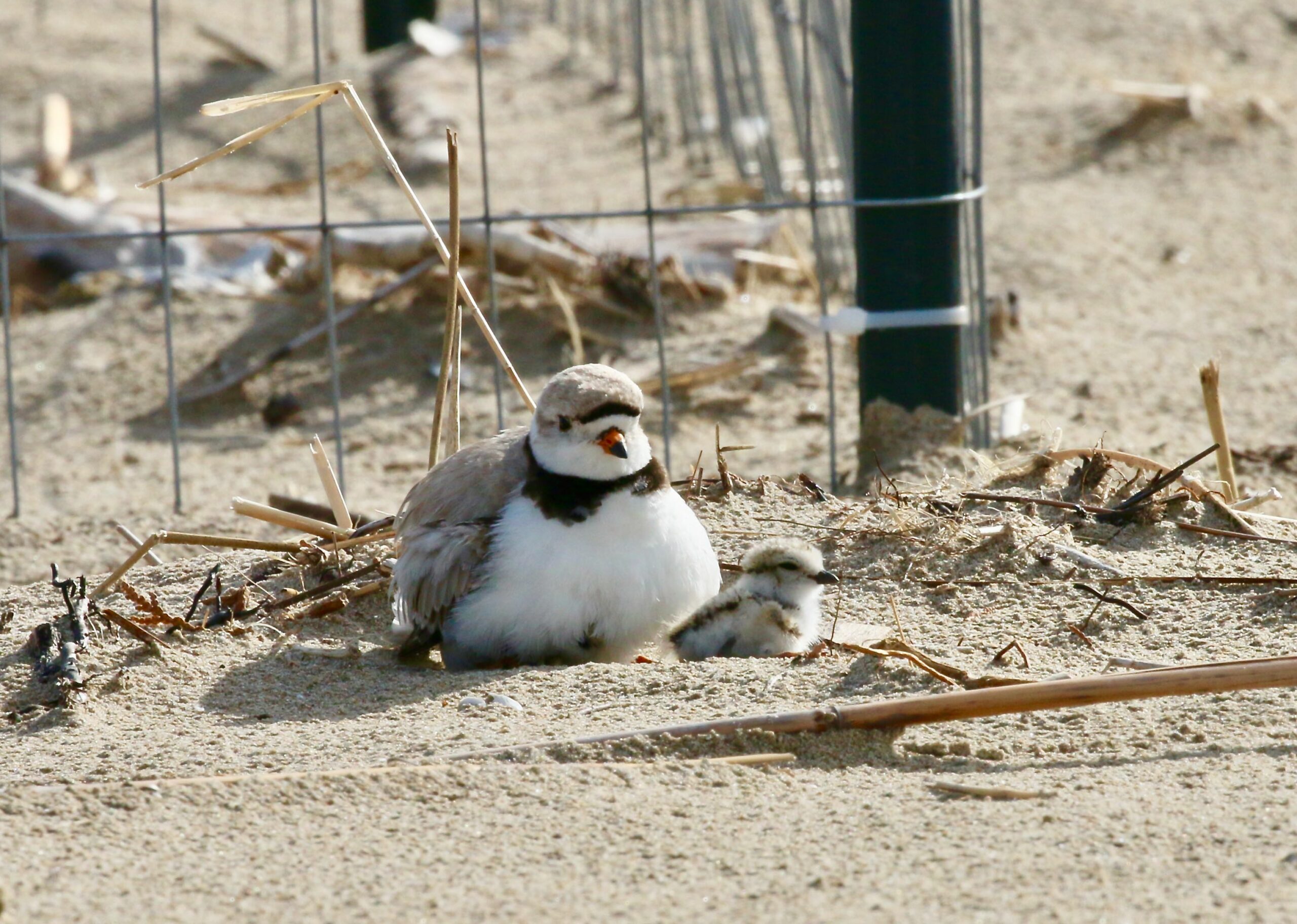
There are 115 endangered species and 56 threatened species in Ontario and what the court decides will impact how we protect all of them, Gray and Beck said. The decision the court takes at this stage of appeal will define the legal relationship between habitat loss and species in Ontario, and could set a precedent around the country and the world.
“Habitat loss and loss of species has been linked scientifically. This case could determine it will be linked in the courts,” Beck said.
Mayor Jackson said she’s optimistic the town will win; if they don’t, there is the option to take this to the Supreme Court. Until the legal challenge is finally settled, the debate over what is a beach and how it can be shared will continue to reverberate across the province.
“There’s no reason for humans and plovers not to get along,” said Gress of Birds Canada. “For years, we’ve treated beaches like they’re just our playground.”
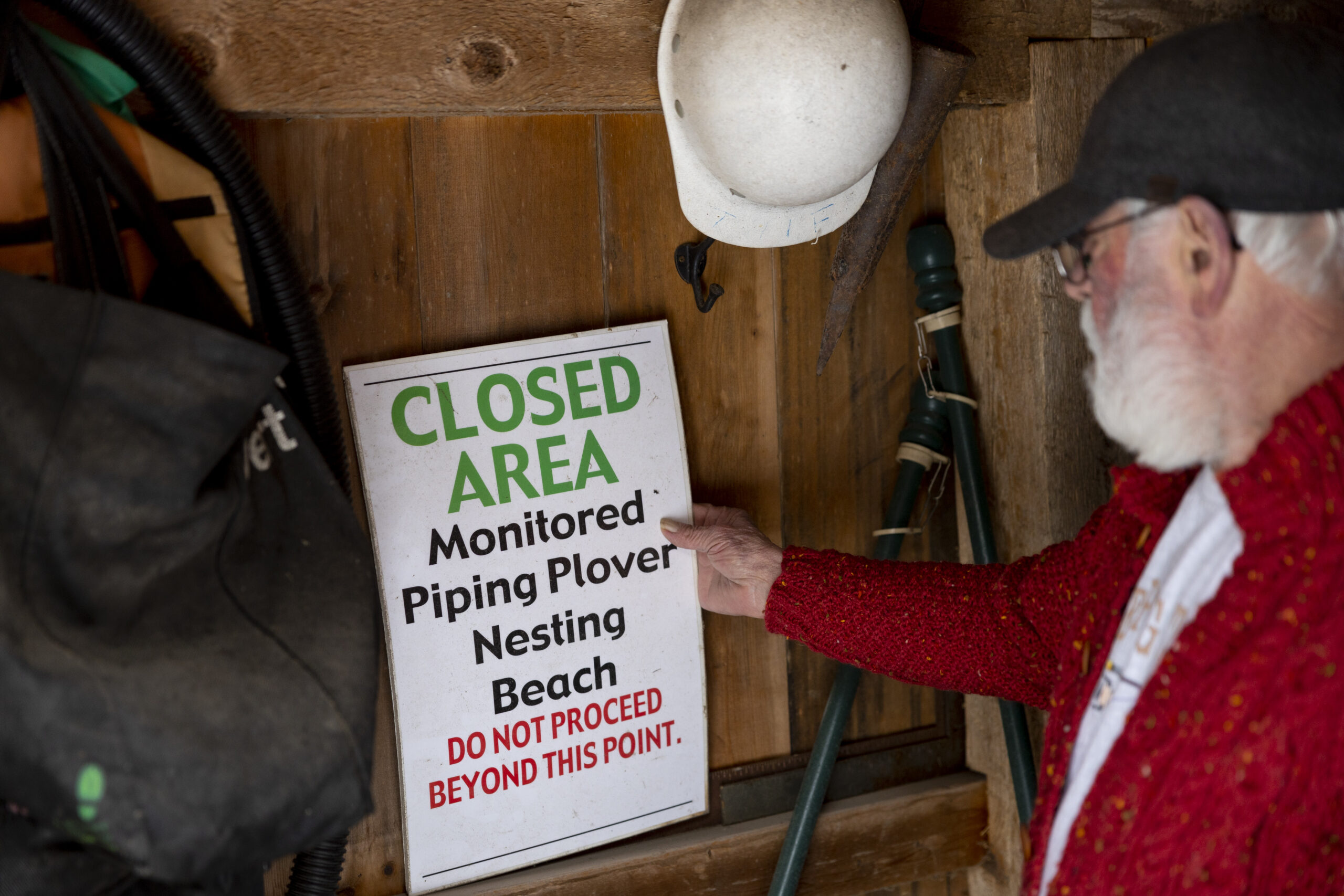
Jackson also thinks the beach can be shared, though the plovers are pretty outnumbered — in 2021, because of the pandemic, the town saw one million tourists, the best year local businesses had ever recorded. For the most part, she said people are “respectful” of plover nesting sites that are fenced and clearly marked.
“It’s not very often that people will jump over that rope and run through their nest site,” Jackson said. “It’s funny how as soon as you see them, you instantly get thrown into protective mode and jump out of your chair to keep the seagulls away.”
“But honestly, there’s not a lot that we can do other than try to educate people that this is a habitat for endangered species and to pay attention, respect and enjoy them. Because they are really cute,” she said. “I keep saying it’s not the birds but the ministry that we’re having the battle with.”
“Our community wanted the beach back but they also want to be the host community to a large plover recovery program. We’re trying to do both.”
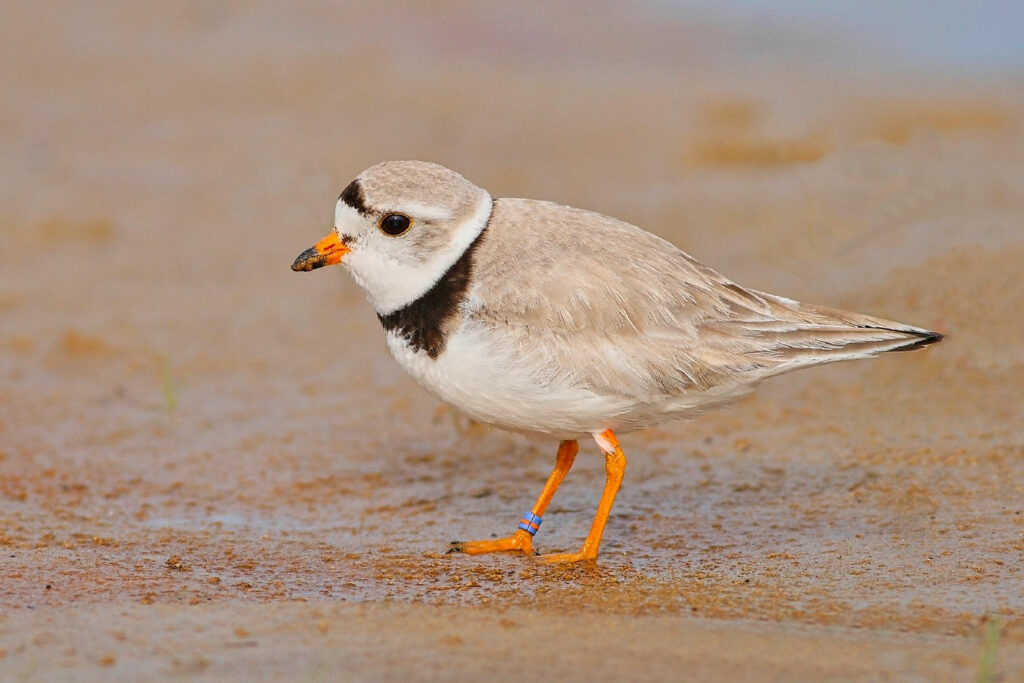
Everything Nutt and Kennedy have learned about plovers has come from hanging out with the birds and observing them closely in places where people have learned to live with them. In 2009, they went to Michigan, the original home of plovers where they learned how to collect and incubate eggs if beach conditions weren’t conducive to nesting and hatching.
They’ve also travelled along the East Coast to learn about various plover preservation projects: unlike Ontario, the Atlantic provinces are focused on saving the species through captive rearing and extensive research programs. “We’ve never been able to convince anybody to consider this here,” Nutt said.
That said, the Sauble Beach Plover Lovers group is distinct in its own way — members believe that by offering people the chance to spend time with the birds, they will realize just how special they are. Nutt said that Prince Edward Island, for example, shuts down six kilometres of a seven-kilometre beach to protect plovers from humans. But that means few have the chance to learn about them and join the effort to save them.
He and Kennedy also aren’t convinced that the best plan to protect eggs is by incubating them elsewhere. At Sauble Beach, plover guardians believe it’s better to help plover families survive in their natural environment — the beach itself.
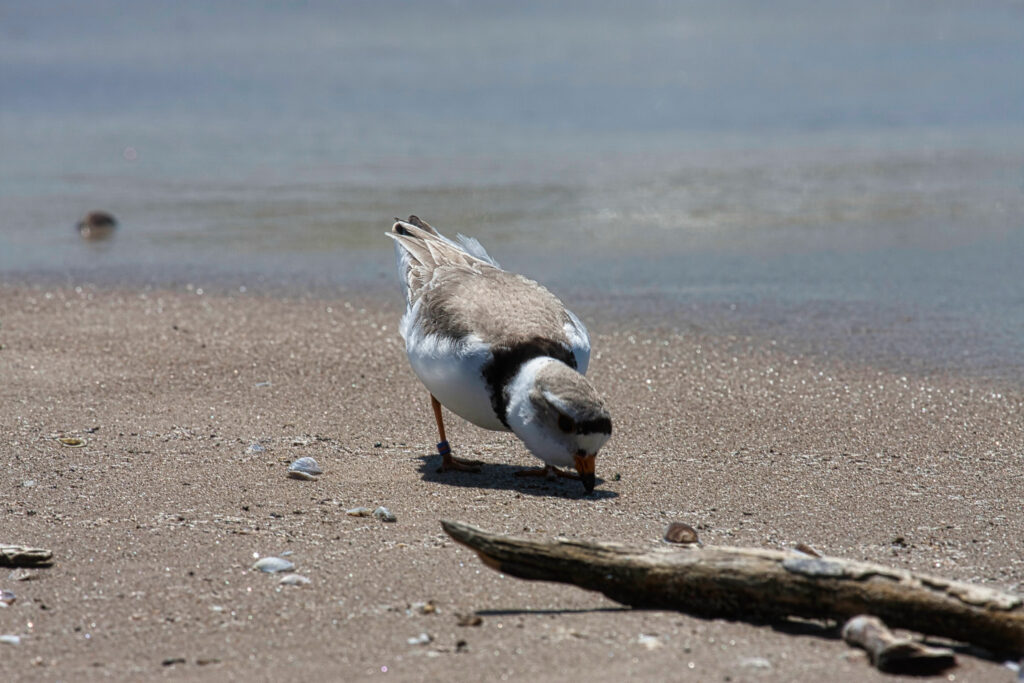
“I don’t think the town is interested in any of this,” Kennedy said. “They only care about tourism now.”
On a regional scale, plover protection is working, at least a little bit: researchers say that there were 76 nesting plover pairs in the Great Lakes region in 2017, up from a low of 11 nesting pairs in the 1980s. But locally, there were only 14 plovers in Ontario last year. Only three pairs nested, just one at Sauble Beach. None of the fledglings in that nest survived, which for plover lovers means more work needs to be done.
And so they’re still at it. In 2015, they folded their work into Birds Canada, which means that the group receives around $24,000 every summer to buy protective equipment, hire a contractor to monitor the beach, co-ordinate volunteers and set up public awareness programs in schools and community centres.
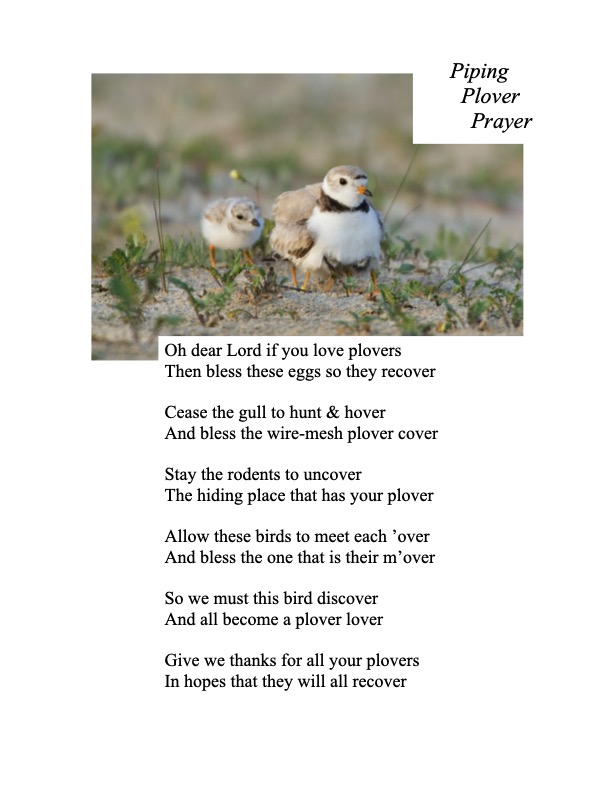
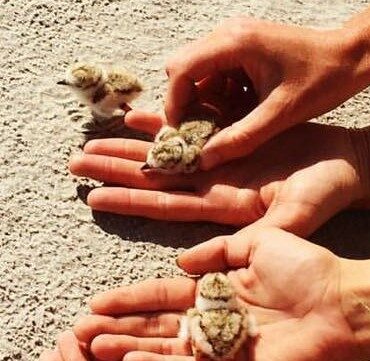
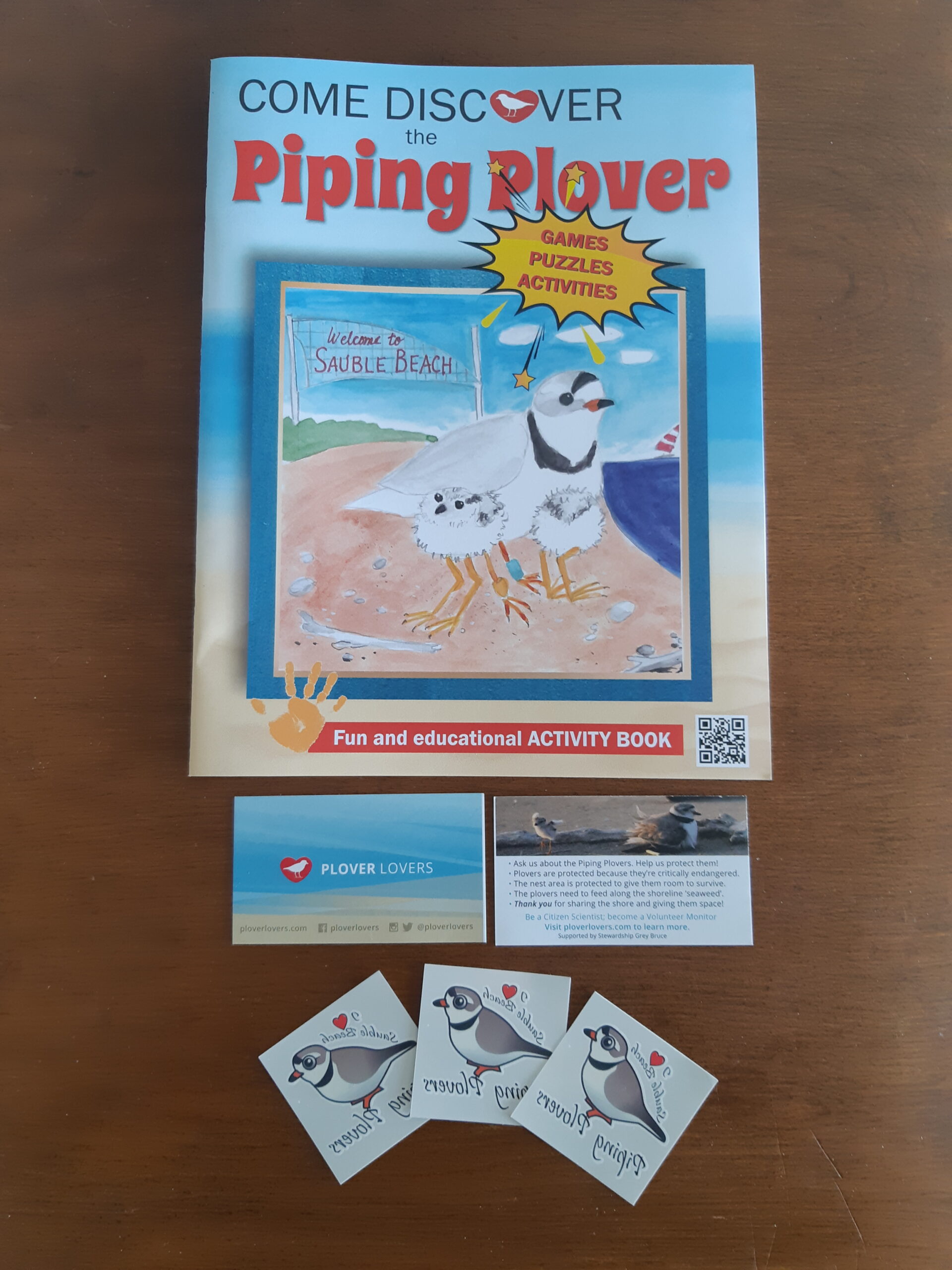
One year, the group held a “beach talk” series at a local church on the shoreline that was attended by around 400 people. They’ve also made temporary tattoos for the public to wear all summer. Anyone with an interest can get a crash course on what these little birds are and why they need to be protected.
Despite these ongoing educational efforts, the relationship between Sauble Beach residents and the plovers has virtually disappeared over the years. Although a handful of post-secondary students sign up as volunteers every summer, the overall number has dwindled. Nutt says they’re lucky if they get seven or eight a summer. “The whole community atmosphere of it is gone,” Kennedy said. “And it won’t be back.”
“We have passion for the birds but I don’t have the fire in my belly to try and take on the council or the changes that have occurred,” said Nutt. “If I was 15 years younger I’d be ready to take this on.”
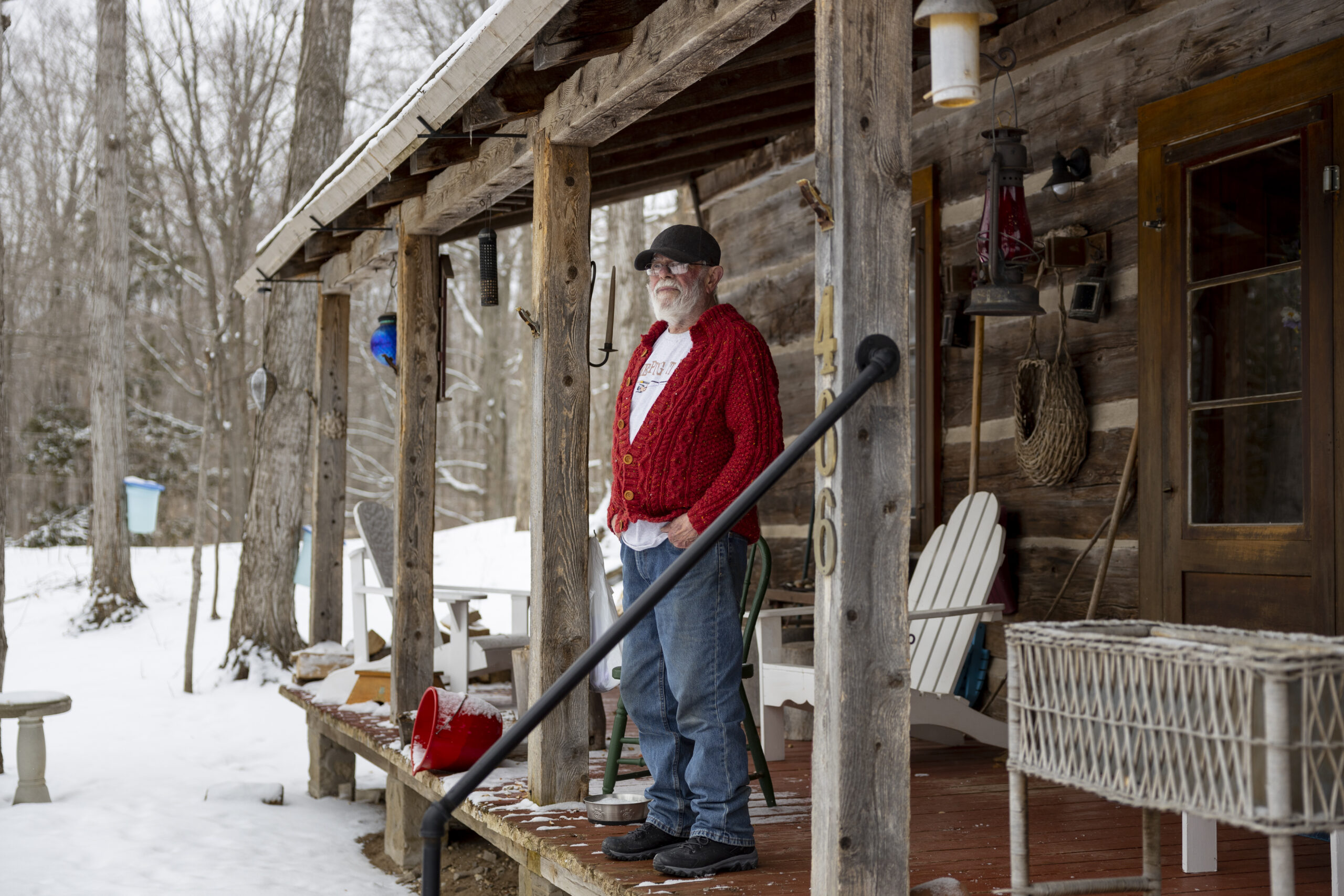
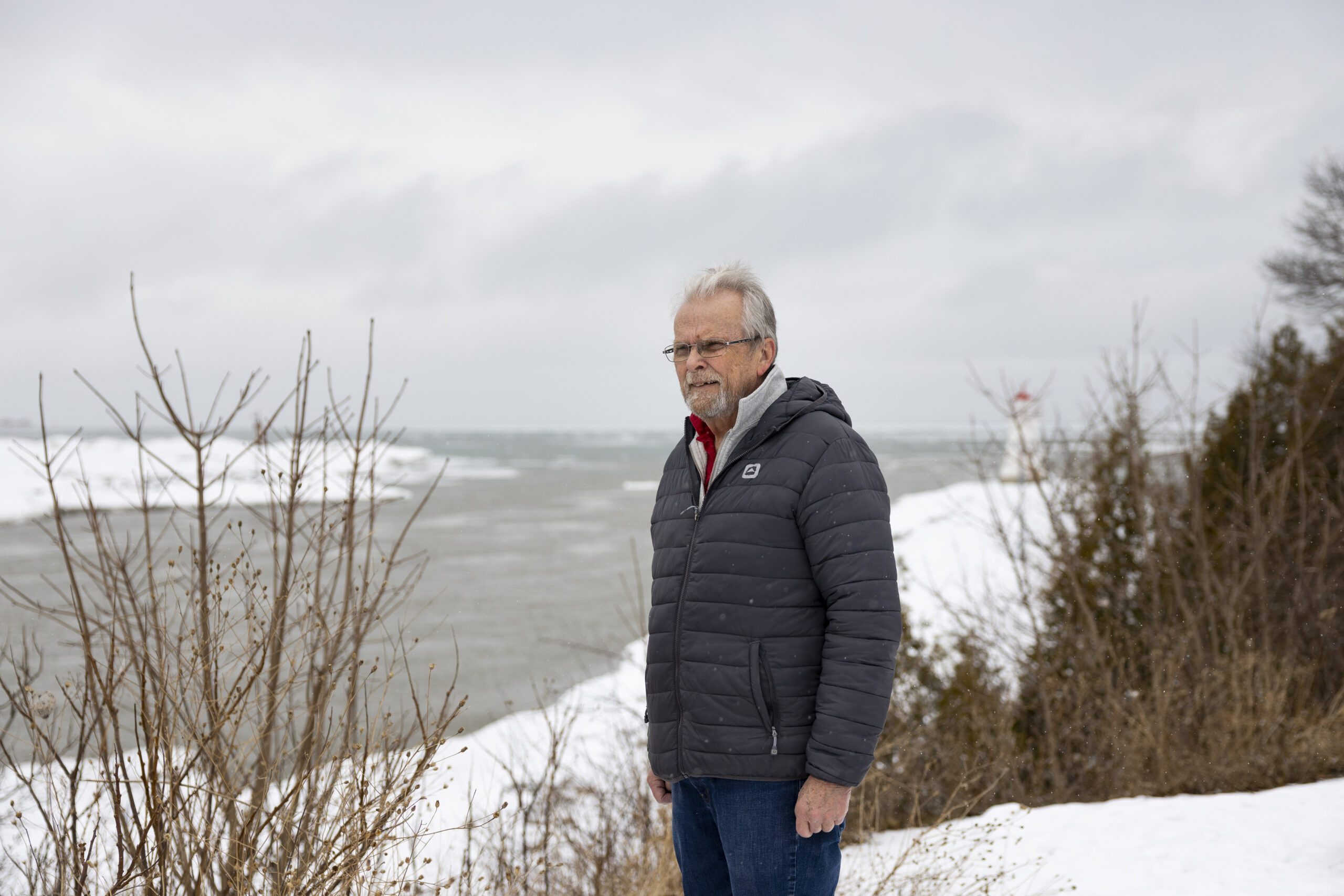
That’s especially true when the plover lovers are outnumbered by city people who want to escape to an almost-tropical paradise. Recent online reviews of Sauble Beach are glowing. “Caribbean meets Canada,” wrote Scarlotta, a visitor from Toronto, in 2021. “The surrounding is like a beach town in Florida,” wrote Nicolas Brownie, also from Toronto, the same year. The word “clean” comes up often.
“It is always a balancing act trying to protect the birds while giving humans a place to play by the beach,” Nutt said. “But, my focus is the birds. I still hope for changes but … well, Fatima, what are you doing this summer?”
Kennedy laughed before declaring that he plans to follow them every summer he can. Those like him are all counting down the days until a little high-pitched chirp comes over the lakes and a tiny bird lands on the beach and makes it their home for the summer.
“I will walk up to them and take a picture and spend time with their babies,” Kennedy said. “And I’ll give you a call when they’re here.”
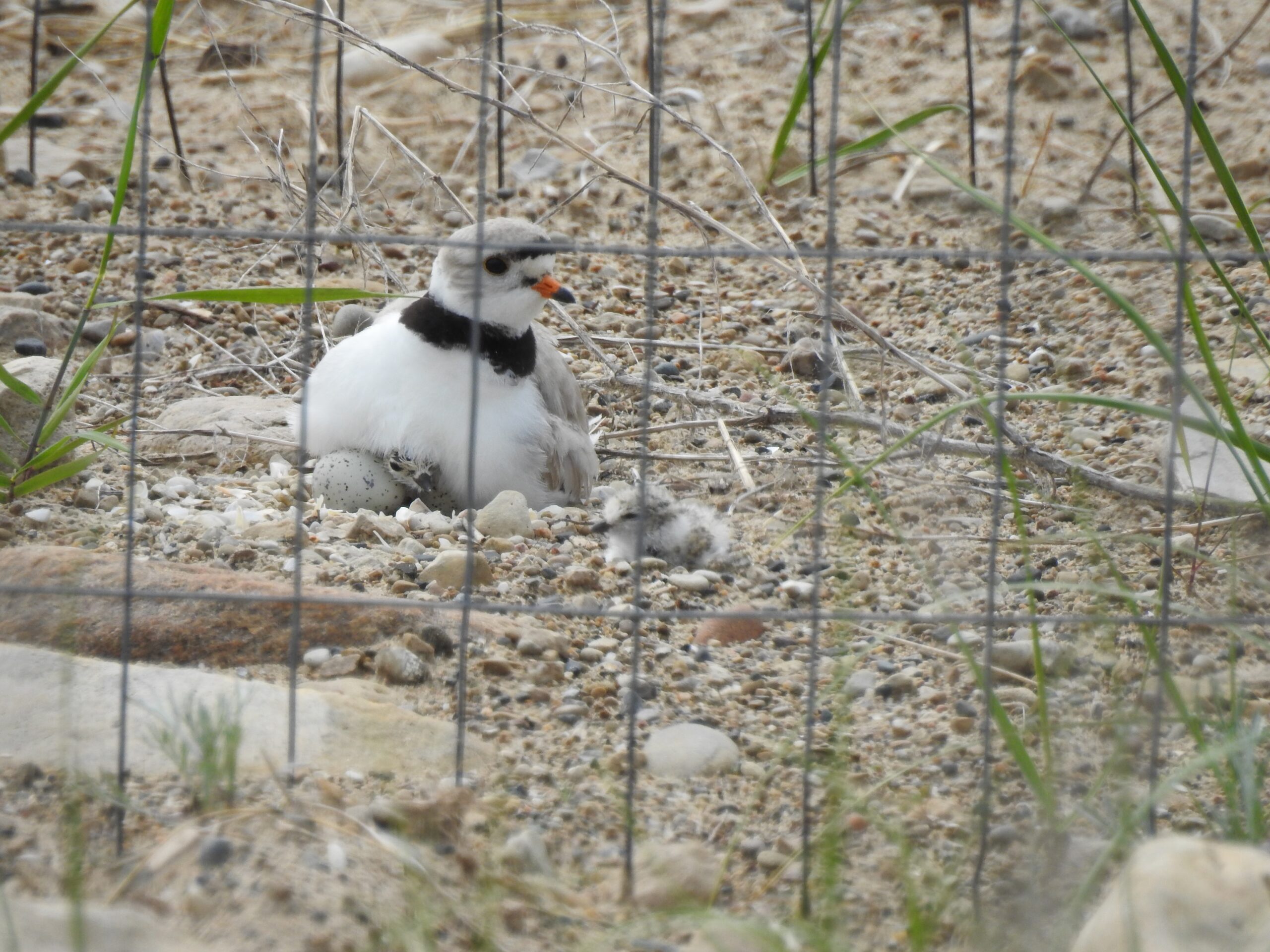
Get the inside scoop on The Narwhal’s environment and climate reporting by signing up for our free newsletter. On a warm September evening nearly 15...
Continue reading
10 billion litres of sewage are dumped into Winnipeg’s lakes and rivers each year. Some...

Court sides with Xatśūll First Nation, temporarily halting Mount Polley mine waste expansion

Break out the champagne: Emma’s storied life and leadership in journalism has earned her the...
